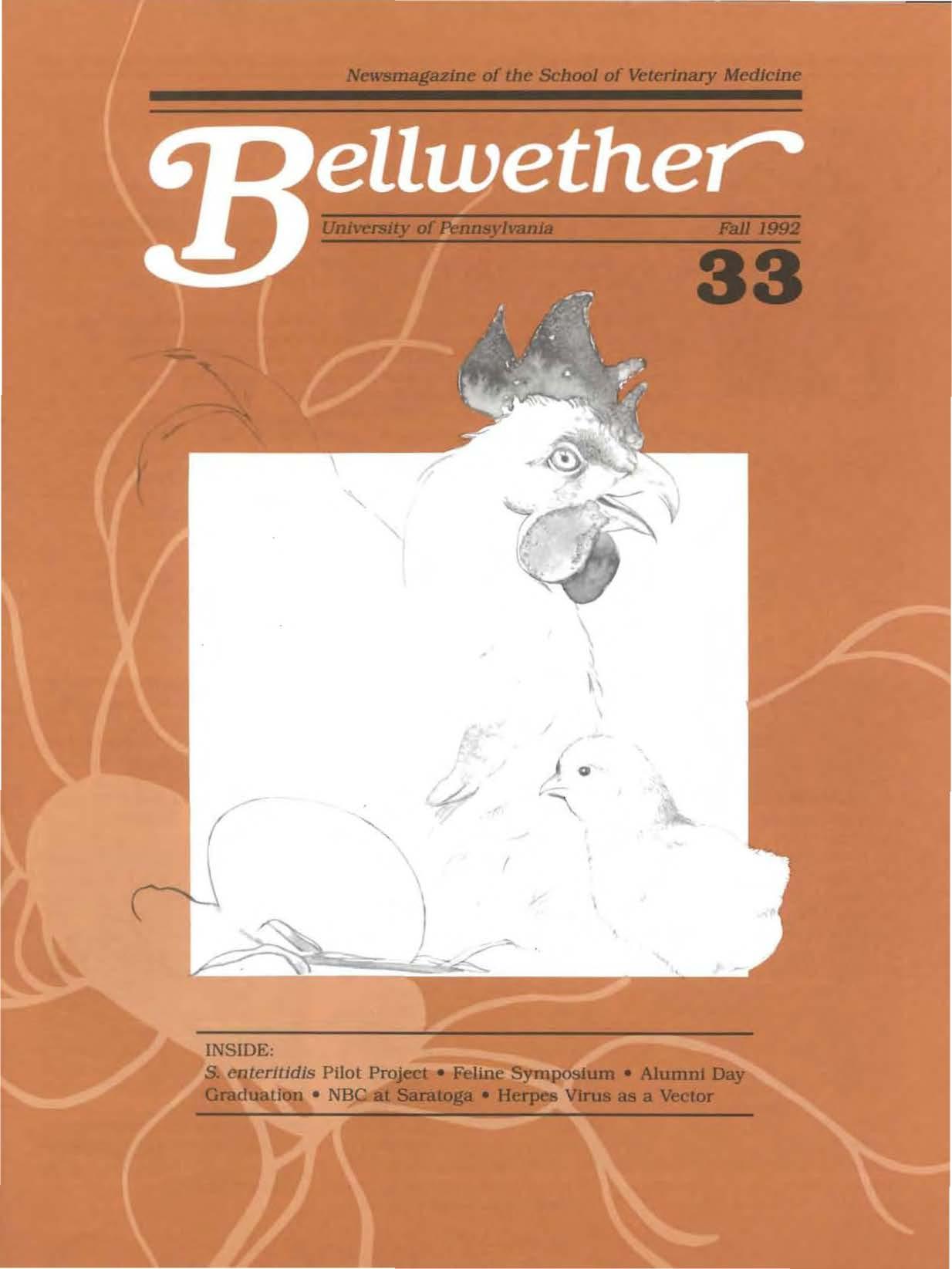

From the Dean:
Dear Friends,

By now the news of our ftnancialsituation has reached nearly everyconstituent of the School and many individuals who did not know of us before.
Indeed, who would have expe<:ted that an institutionwith a proud record of 108 years of education, research and service could be threatened by a draconian cut in its funding? Yet, it happened. And, despite all of our efforts, the Pennsylvania legislature passed a stop-gap budget which fails to provide any funds for private institutions of higher education.
The agriculturalcommunity and our many constituents and friend have risento rhe call and forgeda coalition to assist us by convincing the State to restore ourfunding. We are comforted by aS16.Smillion deficit budget approved by theUniversityTrustees, and are confident thatall th;lt we represent to the state, profession,nation, and indeed the world, will be recognized and appropriately supported.

The issue of stable funding over the last several years has sharply foctlSed the vulnerability which we face inmaintaining the quality of ourinstitution,and the breadth of our programs and services. As I stated in the Spring Bellwether; "those educational institutions with a clear purpose and sustained funding will be the leaders in the next century."
With thesupport of you, our constituents.and friends and withrecognition of our importance by the State we will succeed in being one of those leaders.
Nen' Overtieers Appointed

Mrs. Elsie Sterling Howard, Mr. Edward Kane, Dr. Laurie Landeau, and Mr. Robert P. Levy have been appointed to the School's Board of Overseers.
Mrs. Howard (C'68) is a director of the National Foundation of Ileitis and Colitis and the Comprehensive Cancer Foundation. She also serves as vice president of the Project Newborn of the Neonatal Care Facility and chairmanof theSecondGeneration of tbe Maine Heart Institute. In addition, Mrs. Howard is a member of the Safety Committee of the Cityof Miami Beach, the Chamber of Commerce of Miami Beach, and the board of the Jewish Federation of Miami Beach. She currently serves on the Trustees' Council of Penn Women and the President's Council. Mrs. Howard serves as an alumni trustee and serves on the Trustees' Student Life Committee.
Mr. Kane (C'71) serves as managing general partner of Hancock Venture Partners. Mr. Kane joined John Hancock Mutual Life Insurance
in 1979 and co-founded Hancock Venture Partners in 1982. He previously served in the commercial banking division of the Bank of New England for four years.
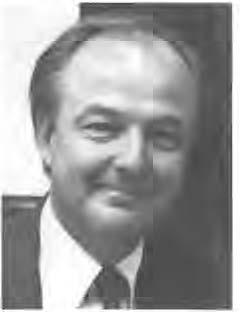
Dr. Landeau (V'84, W'84) is the first alumnae to serve onthe Board of Overseers. Dr. Landeau is president of Marinetics, lnc., an environmental research center. She is also assistant dir,ector of Penn's Program in Aquatic Veterinary Medicine. In 1986, Dr. Landeau co-authored a section on exotic animals in the Small Animal Hospital Formulary.
Mr. Levy (C'S2) is chairman and president of DRT lndustries, Inc., chairman of the Atlantic City Racing · Association, and a partner with his wife, Rochelle, of the Philadelphia Phillies Baseball Team. He is a director of the Philadelphia Chamber of Commerce and president and director of the Thoroughbred Racing Association. Mr. Levy is a recipient of tbe John B. Kelly AthleticAward from the Jobn B. Kelly Foundation, the Service to Youth Award from the
PennsylvaniaSportsHall ofFame, the AlumniAwardofMerit from the Penn Charter Alumni Society. the Distinguished American Award from the Philadelphia Chapter of the National Football Foundation and Hall of Fame, and the 1987 Police Athletic Award. He served on the President's Commission on Olympic sports from1974-76andwas appointed to thePresident'sCouncil onPhysical Fitness and Sports in 1985. Mr. Levy and his family made possible the creation of Blanche P. Levy Park in the center ofcampus, the LevyTennis Pavilion, and the DentalSchool's Levy Research Building and the Paley Professorship for the dean of the Graduate School of Fine Arts. A trustee for many years and a member and past chairman of the Board of Overseers of the School of Dental Medicine, he served on the Trustees' Development. Facilities and Campus Planning and Student Life Committees as well as theInvestment Board and the Athletic Advisory Board.
Ne•v Bolton Center Day
at the Races
The sun came out on this year's New Bolton Center Day at the Races in Saratoga raising the spirits and good cheer of more than 100 gathered friends. Horses honored on this festive occasion included:
DOUBLE FLORIN
by Laurie J. Landeau, V. M. D.GAl MINOIS
byMrs.
Wylie F. L. Tuttle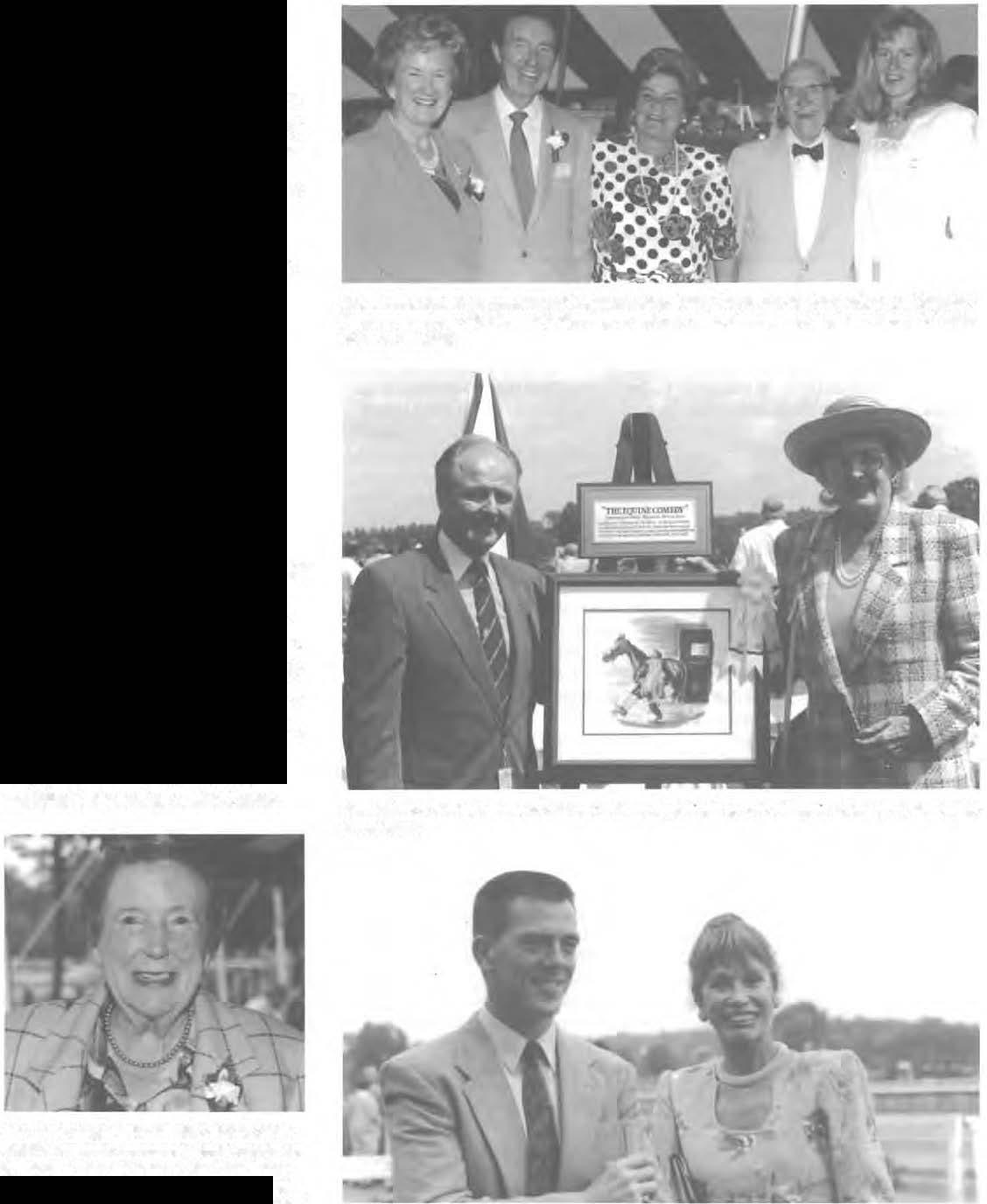
HEIGHT OF FASHION
by H.H. Shaikh
Hamdan binRashid al Maktoum
I'M SWEETS by Brushwood
LORD SUTLER
Stableby Mr. & Mrs. Vincent B. Murphy, Jr.
MR. FRISK
by Mrs. Harry J. Duffey
TOPICOUNT
by Mr. & Mrs. Judson L. Streicher
VICTORIAN HlLL
by Mr. & Mrs. William C. Lickle
At a between race auction, Mrs. Philip B. Hofmann purchased "The Equine Comedy" a painting by Peb donated especially for the event. Proceeds of the benefit will support Dr. Jill Beech's studies on the underlying causes of "tying up" and provide nuclear medicine diagnostics at the Center.
Mrs.JaneLunger,whooffendedtheDaya/the RacesatSaratoga,generouslyhostedapartylast Springas ashow of supportforNewBolton Center.Itwasmostgratifyingtohavesomany friendsjointhepleasantoccasionwhichwasheld attheVicmeodCountryClubnearWilmington, Delaware.
 Mrs.J.MaxwellMoran,chairmanoftheevent,joinsformerDean,Dr.MarkW. A/lam,andBoardof Overseersmember,Mr. VincentB.Murphy,Jr.withhiswife,Patricia,anddaughter,Karen,ATTHE RAIL inSaratoga.
DeanEdwinJ.AndrewssharesamomentwiththehighbtdderofPeb's''EqumeComedy'',Mrs.Philip B. Hofmann.
Mrs.J.MaxwellMoran,chairmanoftheevent,joinsformerDean,Dr.MarkW. A/lam,andBoardof Overseersmember,Mr. VincentB.Murphy,Jr.withhiswife,Patricia,anddaughter,Karen,ATTHE RAIL inSaratoga.
DeanEdwinJ.AndrewssharesamomentwiththehighbtdderofPeb's''EqumeComedy'',Mrs.Philip B. Hofmann.
Salmonella ent n ad s Plot Pro
Salmonella enteritidis has long been a vexing problem for the food industry as these bacteria multiply at a great rate in improperly stored foods or on improperly cleaned utensils or surfaces. One infected egg, for example, in a batch of scrambled eggs left on a steamtable for a few hours, can contaminate the entire dish. In most people. S. enteritidis can cause stomach and intestinal upsets, though the illness can be very serious in young children and the elderly; in rare instances it results in death.
The S. enteritidis organism can be found in the intestinal tract of humans, domestic and wild animals, especially rodents, and presents a problem to the poultry industrybecause it is found in eggs.
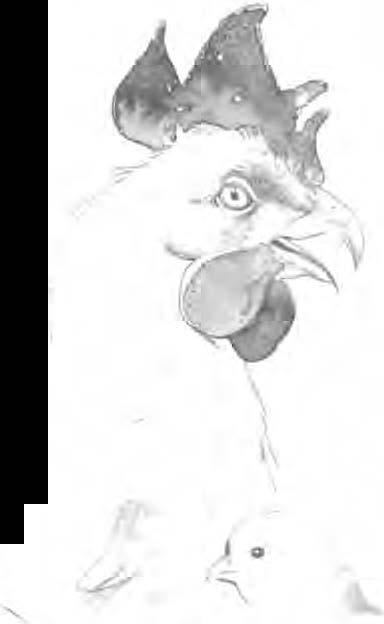
The Pennsylvania poultry industry, with funding from the USDA and the Pennsylvania Department of Agriculture, has mounted a pilot program to reduce the number of S. enteritidis infected eggs that reach the market. This voluntary program encompasses not only the testing of eggs but also testing of pullets, layers, their environment, and a study of the rodentpopulation in chicken houses, as well as a review of rodent control measures.
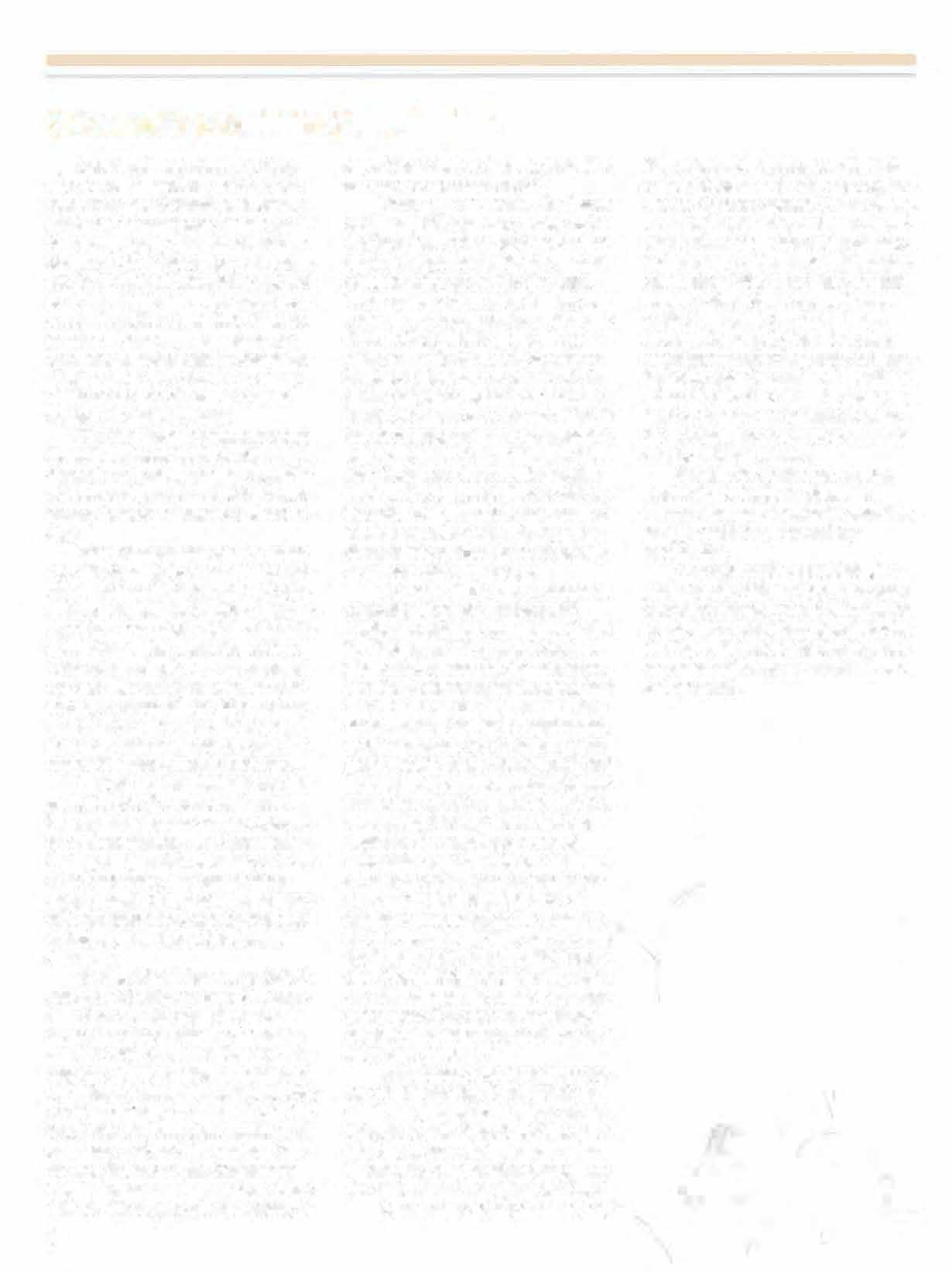
Testing is conducted by four laboratories, the Cooperative Poultry Diagnostic Laboratory at the University of Pennsylvania, the Cooperative Poultry Diagnostic Laboratory at Penn State University, the Summerdale Statc�Federal Cooperative Laboratory at Summerdale, PA, and the National Veterinary Services Laboratory at Ames, IA.
Testing of eggsbegan in mid-July and so far 92,000 eggs from 51 houses have been tested. Eggs from seven flocks have been found to be contaminated with S. enteritidis. "We test eggs only if layers, trapped rodents, or the chkken house have tested positive for S. enlentidis, " explained Dr. Robert Eckroade, associate professor of pathology at Penn's New Bolton Center and director of the Cooperative Poultry Diagnostic Laboratory at the School. "Though a positivereading of l
any of these factors does not mean that the eggs are contaminated.''
When eggs are tested, the farmer submits J,000 eggs every other week for four tests. These eggs are broken and putin batches of 100 thatare held at room temperature for two days. Then samples from rbese batches are cultured on agar platesfor anothertwo days. If S. enteritidis grows, that sample is sent to the National Veterinary Services Laboratory at Ames, lA for serotyping of theisolate. The testtakes abouttwo weeks from start to t1nish. If any of the eggs arefound to be positive for S. enteritidis then all the eggs from that flock have to go to the breaker market; they are pasteurized to kill any bacteria. If the samples test negative four consecutive times, the eggs produced in that particularhouse are sold as graded whole shell eggs.
It is very difficult to eradicate S. enteritidis from the environment. "Mice and chickens go together," said Dr. Eckroade. ''If a house is depopulated and then cleaned, the mice move out. But the moment chickens and feed are put back in, the mice return. They live in the waUs and in the surrounding fields.'' Farmers try to control these pests through rodenticides, traps, and by keeping the area around the chicken house free of taU vegetation. But it is an ongoing battle. "I know of one farm that has used half a ton of rodenticide, and that did not eliminate all mice, but it did control them somewhat," Dr. Eckroade said. He explained that the mice do notappear to be sick even though they are carrying the S. enteritidis organism. "Chickens with S. enteritidis infection also rarely are sick, though the strain in Europe (phage type 4) is much more pathogenic than the strain seen here. There it often kills chickens."
Researchers at the three laboratories will be studying S. enteritidis in mice with particular emphasis on the infectious cycle. It bas been discovered that lhe S. enteritidis strain is often identical in mice, chickens, eggs, and the environment in a given location.
Other factors being examined are
farm biosecurity measures, cleaning an<.l disinfection methods, and vaccination of chickens against S. enteritidis. Dr. Sherrill Davison, assistant professor of avian medicine and pathology, looked at the efficacy of disinfectants when mixed with water from various sources. Some farms use well water while others may use water from streams. Frequently there are other organisms or minerals present that may interfere with the action of the disinfectant. The study is still in progress, butDr. Davison has found that chlorine isusually not an effective disinfectant for chicken houses.
She also is conducting vaccine studies in 12 flocks to determine whether the occurrence of S. enteritidis in eggs could be prevented by vaccination.
The Salmonella enteritidis pilot project studywill take about two years and ultimately wiH involve 200 chicken houses. The researchers hope that their findings will lead to the development of a more effective S. enteritidis control protocol.
New, faster SalmoneUa enteritidis Test
The current tests used to identify Salmonella enteritidis tak:e almost two weeks. Dr. Linda Keller, research associate professor at Penn's Veterinary School, has developed an ELISA (enzymelinked immunosorbent assay) that can determine injust under 30 hours whether Salmonella enteritidis is present in a sample. "This test is basedon a veryspecificmonoclonal antibody to Salmonellaenteritidis,''
said Dr. Keller. ''We incubate the eggsfor 24 hours at 37 C0• Then we take a sample of the material and "sandwich" it between the monoclonal antibodies. We can get a reading of the sample in about three hours.''
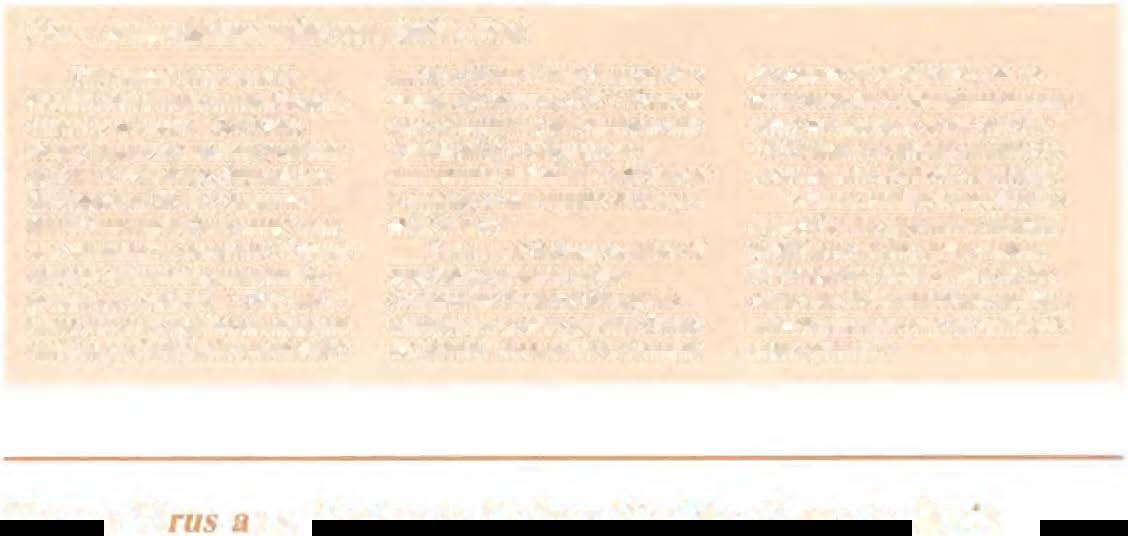
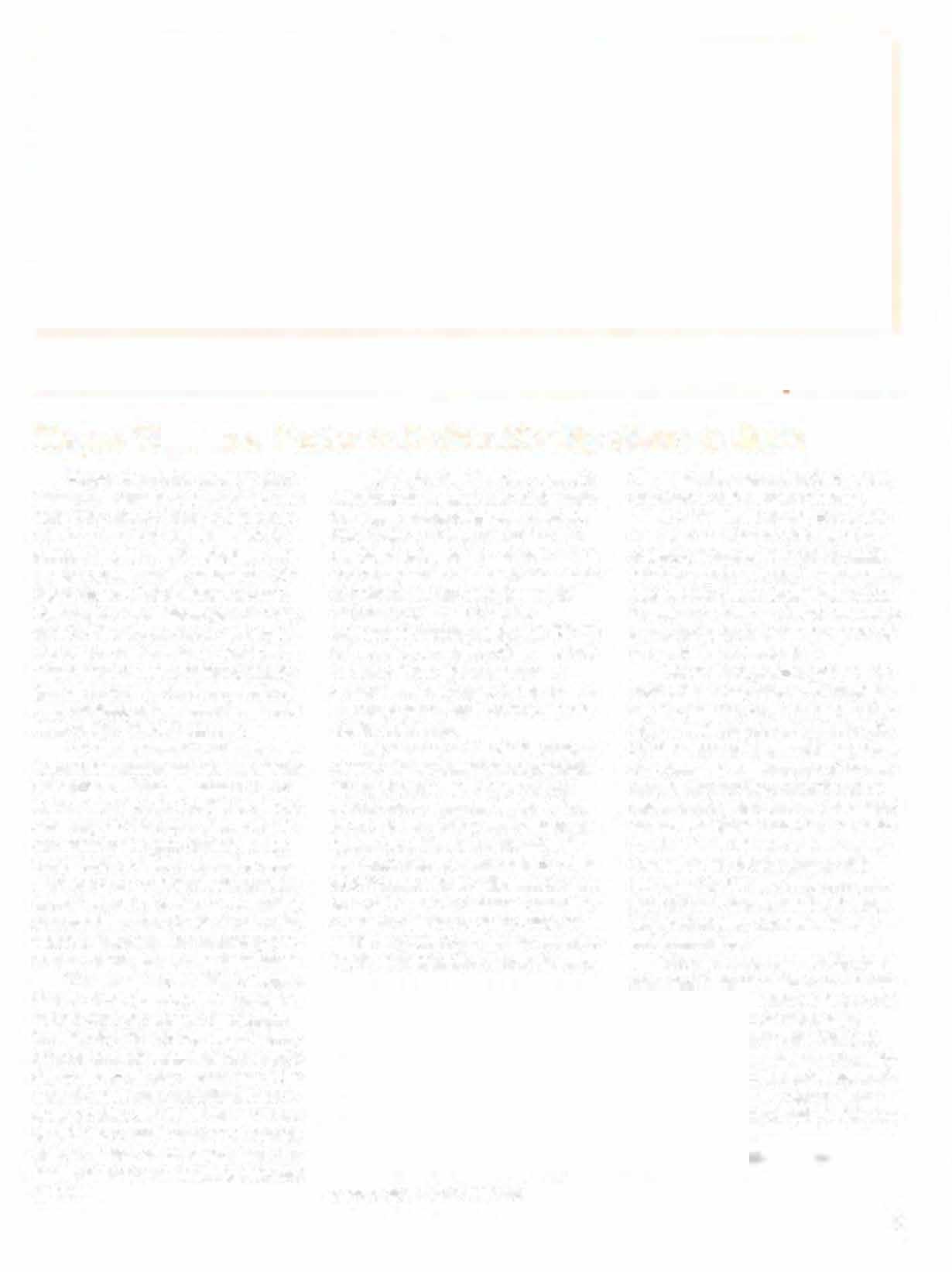
Because of the large number of eggs being cultured at the Cooperative Poultry Diagnostic Laboratory at New Bolton Center. Dr. Keller has been able to compare
the results of the ELISA test to those from the conventional test and verify the accuracy of the new test.
"It's been very exciting and may be a commercial kit can be developed. When a reading is negative in a suspect house, eggs can be diverted back faster to the grade market.
This helps the farmer. And on the other side, if the results are positive, control measures can be instituted much quicker."
Herpes l'i �� s a Vector to Deliver Healthy Gene to Br:un
Herpes virus, after an acute short infection, becomes latent in the nerve cells. This latency factor plays a key role in research by Dr. John Wolfe, assistant professor of pathology and medical genetics at the School, and Dr. Nigel Fraser of the Wistar Institute. Dr. Wolfe, a specialist in gene therapy, and Dr. Fraser, an expert on herpes virus, h:J.Ve collaborated to construct a herpes virus vector to deliver a healthy gene to central nervous system cells of mice afflicted with mucopolysaccharidosis (MPS) Vli (Sly disease).
''The herpes virus is uniquely able to transfer genetic material to a brain cell without killing it because it is a latent virus," notes Dr. Fraser. "The advantage of the herpes virus is that it can transfer the gene directly to the target organ. without removing cells from the body and then reimplanting them," says Dr. Wolfe. "The healthy gene remains active in the brain cells, which is important for achieving permanent correction of the deficiency."
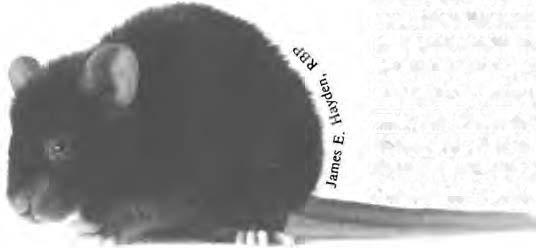
The researchers modified a herpes simplex virus (HSV-J) and inserted a normal gene for enzyme production near the location of the virus' latency gene to take advantage of that gene's ability to activate the normal gene. The reconstructedvirus was injected into a group of mice with MPS VIJ and it was found that a small number of central nervous system cells then produced the proper enzyme over a prolonged period of time.
This is the first time that a genetic deficiency in diseased cells of the brain has been corrected by gene therapy. Drs. Wolfe and Fraser caution that further development is needed to correct enough cells to improve the disease in patients. It has been shown, in previous studies, that vectortransferred enzymeactivity in MPS Vlf can result in correction of the metabolic defect. Thus the expression of vector-transferred gene in the central nervous system should correct the metabolic deficiency.
Slydisease, an inherited lysosomal storage disease, causes mental retardation and affects the liver, skeletal system, heart, eye and brain. lt is a rare, but devestating fatal disease of humans, and has been identified in dogs and mice. lt is estimated that I in 25,000 human births willresult in some form of MPS. The disease is caused by a genetic deficiency where cells are unable to produce an enzyme needed to break down complex sugar molecules.
The molecules accumulate in the cells, interfering with normal function.
Dr. Wolfe points out, that at this time, the number of cells showing activity of the corrected gene is small. However, as knowledge increases, the herpes virus vector could become an important vehicle to deliver corrective genes to the brain and other parts of the central nervous system.
The medical genetics group at the School has a long history of investjgating the genetics, biochemistry, pathology, and treatments of animals with genetic diseases. Studies of these naturally-occurring counterparts of human genetic diseases have contributed to understanding both human and animal health. The Wistar Institute is an independent basic science research center located on the Penn campus with programs in virology, molecular genetics, cell and developmental biology, cancer therapies, structural biology and immunology.
The work was supported by grants from the National Institute of Diabetes and Digestive and Kidney Diseases, the National Institute of Neurologic Disorders and Stroke, the National Institute of AJlergy and Infectious Disease, the National Center for Research Resources. the Mrs. Cheever Porter Foundation, and the Lucille P. Markey Charitable Trust.
A mouse afflicttdwith MPS VII.Fifteenth Annual
The Fifteenth Annual Feline Syrnpo� sium wa� held April I I, 1992 at VHUP. More than 120 people attended, the largest attendance ever for the symposium. following are the summant:s of the presentations.


Common Feline Emergencies
Feline medic<tl emergencies are typified by a unique liet of injuries and lllnc:sses, and cats have a tremendous ability to recover from most of them. Dr. Kenneth Drobatz, assistant profesc;or of emergency medicine and chief or VHUP'� 24-hour emergency services, discussed some common feline medical crises.
Trauma is a prevalent problem for urban cats. The most common accidents involve cats struck by cars or fallen from high�rise buildings. A study of the latter found that the most serious injuries occurred in cats that fell from between five anti ntnc stones. Interestingly, cats that fell from more than nine stories generally experienced not as severe damage because they hit a tcrminlll velocity while falling. Having stopped accelerating, theyrelaxed, and thetr muscles were not as tensed when they hit the ground.
The shock that often results from trauma is normally markedby labored breathjng and poor blood circulation resulting from low blood pressure. Trauma victims are usually in shock, so practitioners normally assess airways first, and then check mucous membranes, which become pale with poor circulation. lf a compromise exists, the patient may be given oxygen to assist breathing and IV fluids to increase blood pressure. Kidney damage, ruptured bladders and diaphragmatic hernias are commonly seen in accident victims. When a diaphragmatic hernia occurs, the diaphragm is no longer able to prevent the abdominal organs from slipping into the chest cavity. This slippage inhibits lung expansion, causing labored breathmg. After the condition has been detected, normally by radiography, a surgeon will open the abdomen, pull back the abdominal organs and suture
the diaphragm.
Pneumothorax, leakage of rur from the lungs into the chest cavity, is another accident-related complication which may cause lung compression. A cat suffering from pneumothorax is difficult to work with because it is experiencing difficulty breathing, so it is normally put into an oxygen cage immediately. Once calm, a needle may be inserted into the chest to draw out air.
Bite wounds are usually very treatable, but may close if not tr¢3ted immediately, sealing in infection. Proper drainage to flush out bacteria is critical
A practitioner will normally explore a wound to check for muscle damage, especially in dog bite cases. Dogs tend to shake their victims, so while a dog bite may appear minor, severe muscle injury may have occurred. lf a bite has penetrated the abdominal cavity, the intestines may have been punctured, resulting in leakage of harmful bacteria. In this case, a surgeon will normalJy open the abdomen immediately to check for intestinal perforations.
Cats hide injury and illness very well, and cats that have been wounded often appearto be sound immediately following an accident. Their condition, however, may change rapidly, and they should be monitored at a treatment facility for 24 hours. Shock and brain swelling may occur several hours after the initial trauma, and pneumothorax may develop very slowly.
Cats' lives may also be endangered by serious medical emergencies unrelated to accident, Dr. Drobatz said. Feline urologic syndrome (FUS), which may manifest itself as urethral blockage, involves the formation of crystals in the urine. Urinatton becomes pain-

ful and labored, and urine may be slightly bloody. While plugs may form in the narrow urethras of male cats, obstruction does not normally occur in females.
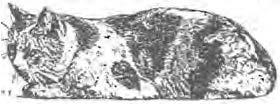
Blockage is easy to diagnose by feeling the abdomen, which swells from urine build-up. Accumulation of potassium may result, which can cause cardiac arrest, seizures, decreased blood pressure and fluid build-up m the lungs.
Very treatable, FUS must be attended to immediately to avert serious consequences. Drugs are administered to counteract the effects of excess potassium on the heart, and IV fluids are used to increase the blood pressure. A urethral catheter will flush out the plug in about 99% of cases. If this cannotbe achieved a perineal urethrostomy is performed, where the penis is amputated and the urethra widened.
Pyothorax is an infection in wh1ch pusaccumulatesin the chest. Respiratory distress, sometimes accompanied by shock, may occur. Treatment involves drainage of pus by tubes inserted into both sides of the chest. The pus is cultured, and the tubes are removed when the bacteria count drops sufficiently. The disorder is very treatable, but requires constant monitoring for such secondary conditions as pneumothorax.
Cardiac emergenc1es occur most frequently in cases of dilated cardiomyopathy, in which the musculature in the wallof the heart becomesvery thin, preventing the heart from contracting normaUy, and hypertrophic cardiomyopathy, in which the muscles thicken, reducing the chamber size to such an extent that the heart may pump only small amounts of blood through it.
Cats with heart disease may experience respiratory distress, tachycardia, arrhythmias and sometimes hind leg paralysis, a very painful condition resulting from bloodclots that migrate to therear quarters. In most cases, feline
heart disease involves hypertropluc, rather than dilated, cardiomyopathy, but an ultrasound is required for accurate diagnosis. Once the condition has been determined. a diuretic ami vasodilator may be administered, and the cat may be put into an oxygen cage to stabilize prior to further examination.
Because cats have a remarkable ability to hide severe infimtity, accid�:nt� aod minor irregularities should receive immediate medical attention. Their hardiness, however, lends credence to the nine-lives myth, a� they ofren overcome very serious ailments.
Feline Behavior: Understanding the Problem Cat
Feline behavior problems are almost as varied and complex all the factors whichcause them, according to Dr. Karen L. Overall, lecturer in behavioral medicine, who runs the Behavior Clinic at VHUP. Dr. Overall profiled some prevalent feline behavioral disorders, particularly elimination problems, and she recommended waysto eradicate them.
Most of the 20-«> feline related phone calls the Behavior Clinic receives each week, Dr. Overall explained, concern inappropriate elimmation. Many behavior problems not associated with elimination, such as aggression. in cats originate during key developmental stages, known as "sensitive periods." Onset of the socialization period occurs at about three to four weeks of age, at which time play and ample stimulation from people and other cats is critical. At aboutfive weeks, they begin to develop predatory behavior, and at about seven weeks, they concentrate on their eyepaw coordination skills. Kittens continue to develop sociaUy until about twelve to fourteen weeks of age.
Feline and canine developmental cycles should not be equated, as developmental periods in cats begin earlier and have shorter duration. If an owner fails to make available to a kitten tberequisite stimuli during these
key stages, the risk of its developing behavioral problems associated with the neglected periods is greater. Dr. Overall summarized the results of a study, by Dr. Eileen Karsh at Temple University, which found that cats handled by human beings at earlier ages (two to seven weeks) were more comfortable with people in later life.
Normal feline behavior is also dependent upon early exposure to other cats. A kitten completely isolated from other cats until ten months of age becomes very hostile and cannot functionsocially. This may be a factor inproblems often seenin early-weaned stray cats; because many of these cats were never taught how to play as kittens, as adults, they play in a very predatory manner.
Dr. Overall described the case of a client who brought in a stray cat that she spent every evening fending off. "Everything the cat did was in a predatory rather than a social context," Dr Overall said.
Feline maternal nutrition is also a factor. If prepartum maternal nutrition is decreased by 50%, potentially common among urban strays, newborn kittens are often neurologically undeveloped. These cats are usually very aggressive, and tend to overreact to situations.
Whether expressed through ''letme-go-bites," furnHure scratching or possessive behavior, aggression towards people and other cats is a common feline problem. In order to avoid actual confrontations, most cats give clear warning signs tO discourage encroachers. Every cat owner should be familiar with these postural and facial signals in order to avert danger, Dr. Overall cautioned.
Commonly linked with anxiety, aggression can be precipitated by the presence of certain people or animals, as well as by such changes in household structure as death and divorce. While the owner is usually not the cause of the eat's problems, he or she may induce stress, which could exacerbate the cat. Chewing, howling and other anxiety responses may be controlled with such negative reinforcements as fog horns and water pistols, effective deterrents when used within 30-60
seconds of the onset of the behavior. However, if the catis not exhibiting the behavior to get the owner's attention, anxiolytic drugs may be needed to 1real the underlying problem.
Aggression can be coupled wtlh elimination problems in the case of spraying, where cats mark their Lerritories with urine. Research by a group in England and by Dr. Amy Marder atTufts University found that in households of ten or more cats, the probability that atleast one cat sprays at some point in time is 100%.
Somettmes associated with mating and courtship, spraying is more common in males than in females, and seen more in sexually mature cats thau in immature ones. Castration and spaying can greatly diminish the incidence of this behavior.
If a cat is urinating or defecaring in areas other than lhe litter box in order to mark its lertitory, the owner must attempt to treat the aggression problem, a;, well as to interrupt rhe behavior with negative reinforcement as soon as il commences. Drug therapy may be successfully implemented to mitigate spraying and other unacceptable behaviors associatedwith aggression and anxiety.

Benzodiazepines, such as Valium and Tranxene-SD, induce cessation of spraying in 60-90% of cases.
Progestins are used withsome success, and Buspirone (BuSpar), a new non· specific anx.iolyric, has also been employed effectively.
By far the most common elimination problem is substrate preference, wltich reflects a eat's penchant for the feel of a rug, cloth. newspaper or other substance, which may be coupled to an aversion to the material in its litter box.
Following dec:law procedures, many cats, having become partial to the softer materials placed in their cages at the vet, eschew the gritty substance in their own litter boxes because it hurts their toes.
It is important to realize that once a cat is put in a position of sampling a new substrate or location, itmay never revert to a previous situation. Similarly, if a cat begins to eliminate elsewhere because of litter box filth,
blocked access or even proximity to a person or animal it dislikes, it may develop a location or substrate preference.
Location and substrate preferences can sometimes be combatted with the use of plastic, the feel of which most cats dislike. ff a location preference exists, the eat's litter box should be temporanly moved to the preferred spot.
Elimination problems can aJso have a physical basis, so when a behavior problem is suspected, the practitioner normally tests ftrst for physical illnesses; 50% ofcatsthatvisit the behavior clinic must undergo medical treatment for underlying physical problems that have caused their behavior anomalies.
Feline maladaptive behavior can seriouslydisrupt a household, and the owner should invoke the help of a behavior specialist should medical tests come back negative. Then, with a balanced dose of behavior modification for inappropriate behavior and praise for good behavior, accompanied by patience, experimentation and possibly drug therapy, a win-win situation may be attainable.
J.C.
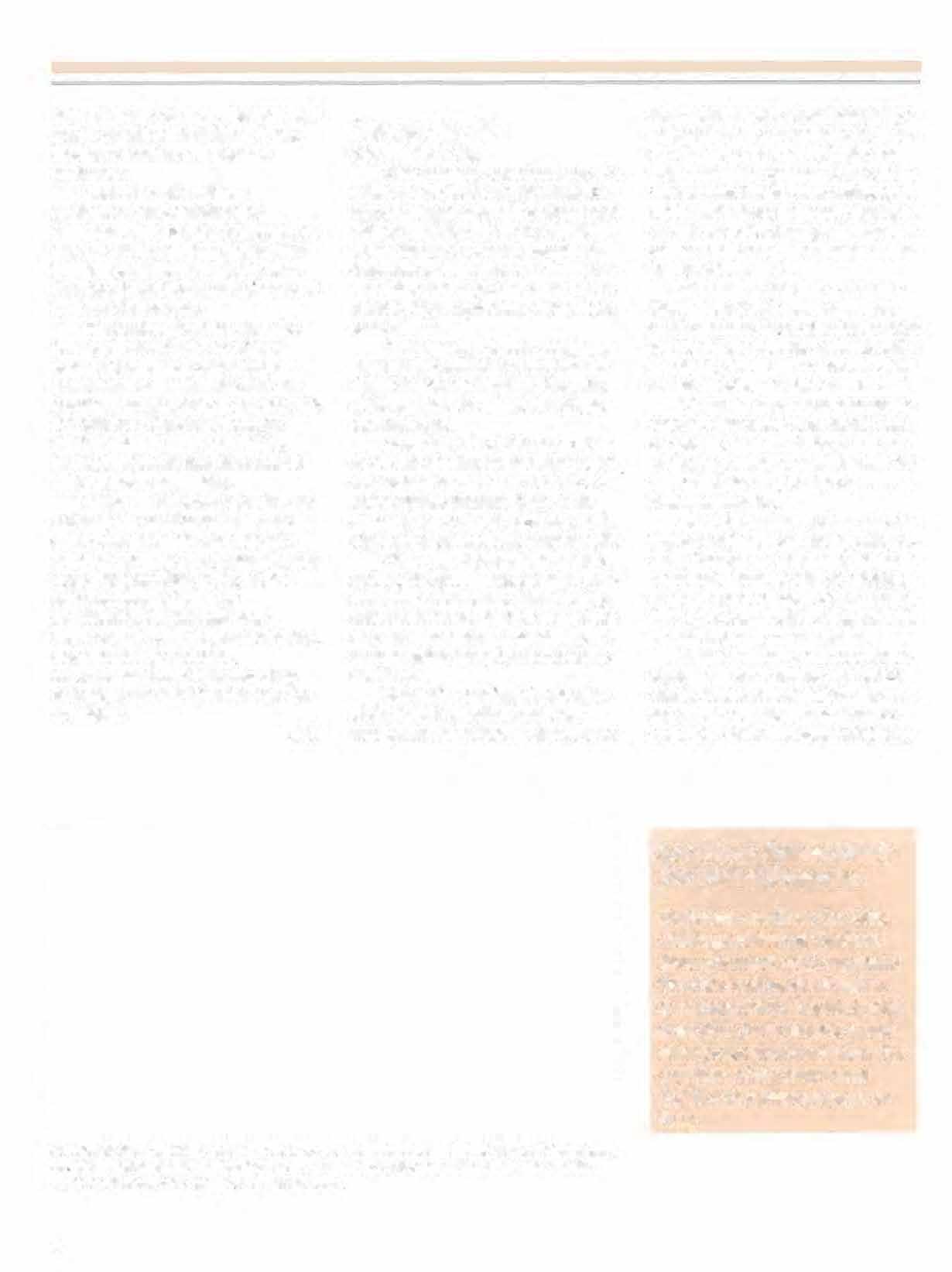
Diseases in the Geriatric Cat
Older cats may experience any of a number of medical complications.Dr. Meryl Littman, associate professor and chief of medicine at VHUP, highlighted t.he disease processes, symptoms, diagnoses and treatments of three common disorders of geriatric cats- hypertension, hyperthyroidism and chronic renal failure.
Quite prevalent in older cats, hyperthyroidismis markedby excessive secretion of the thyroid hormone, thyroxine, which catapults the animal into ahypermetabolic state.
According to Or. Littman, 95%-98 % or cats with hyperthyroidism experience weight loss, and most of them undergo appetite increase. There is an exception to every rule, however, and some mayexperience suppressed appetite.
Other signs include hyperactivity, panting, high blood pressure, rapid heart rate, heart enlargement, blood testing, murmurs and arrhythmias. Affected cats may also experience nausea, polyclipsiaexcessive thirst, and polyuria -excessive urination.
Diagnostic tests mclude palpation of the thyroid glands to check for enlargement, blood testing, thyroid scans
and thyroidbiopsies when malignancy is suspected. Most veterinarians also listen for heart murmurs, arrhYthmias and triple-beat gallop rhythms. Other cardiovascular tests include chestradiographs, EKGs, and echocardiograms. Practition· ers may check the blood pressure and the retinas, which may show damage due to high blood pressure.
Standard serum tests- complete blood count (CBC) and chemscreen, which measures several chemical levels in the blood, are normally ordered, and a urinalysis, which may reveal low urine specific gravity, may also be performed.
T3 and T4 tests, which measure the amountof thyroxine in the blood, must be specially ordered. If the results are borderline normal, a more sensitive T3 suppression test maybe done to make a fmal deterrrtination.
Several treatment options exist for hyperthyroidism. Drug therapy may include Tapazole or radioactive iodine in therapeutic doses, as well as antihypertensive drugs if needed. After stabilization, Dr. Littman said, T4 tests should be repeated every three months.
More common in male cats, hypertension may be a problem for elderly cats. In studies done at VHUP, the mean age of cats with the disorder was 15 years. Dr. Littman reconunended diag-
Cat Show Raises Funds For Feline Programs
The Morris and Essex Cat Club, with support from the National Birman Fanciers, the Long Island Cat Club, and Purfect Persians, hosted a cat show on April l2, 1992 at the Penn Tower Hotel to benefit feline programs at the School. The organizers of the show raised $1,902.49 for feline programs at Penn.
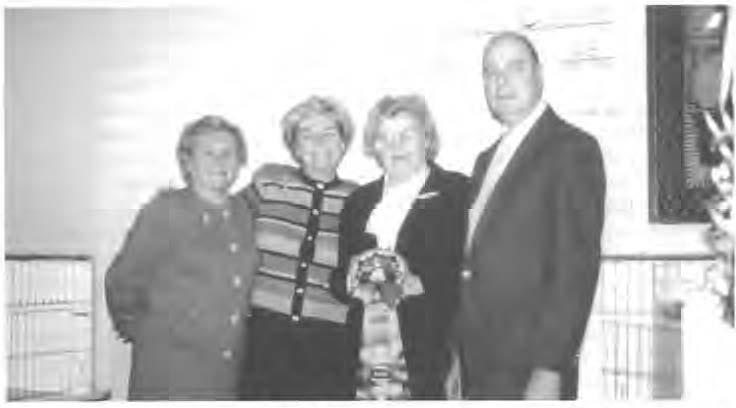
nosisofhypertensiononlyjncaseswhere thepressureexceeds 160/lOOmmHg,to allow for situational anxiety that many cats experience when taken to the veterinarian.
Whenthebloodpressureincreases, vessels in the eye may burst. Retinal hemorrhage and detachment may cause oneofthemoreseriouscomplicationsof hypertension - blindness. The objective, however. is to stem further damage by recognizingruptures before the catgoes blind
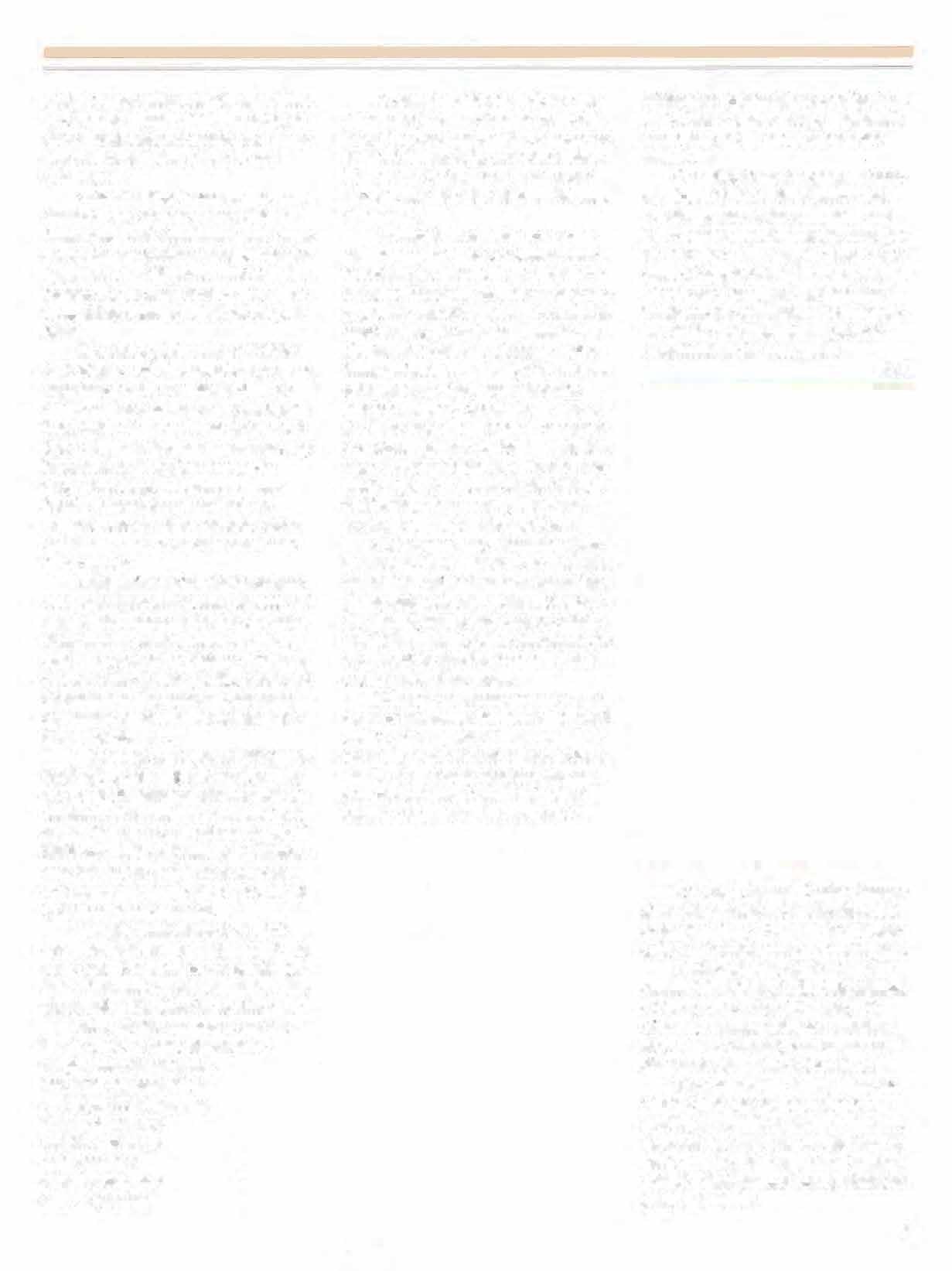
rn a study performed at VHUP, 41%ofcatswithelevatedbloodpressure experienced such neurologic signs as stroke,seizureandtemporarylimbparalysis. Other signs are renal failure and heartfailure,which maybepromptedby hypertension. Polydipsia/polyuria, weight Joss, hyperthyroidism, nosebleeds, labored breathing and, in extreme cases, sudden collapse, coma and death, havebeen associated with hypertension.
Diagnosuctestsincludebloodpressure measurements, ocular, thyroid and neurologic exams and blood work-ups. Veterinariansusuallycheckforleftventricular hypertrophy, kidney shrinkage andlowurinespecificgravity. Chestand abdominalradiographsandu1trasounds are usually performed to monitor the lleart and kidneys.
Whenacatisdiagnosedwithhyperlension, itisnormallyputonalow-salt diet, and diuretics are administered to facilitate salt excretion. Beta blockers, suchasTenorminand lnderal, andACE inhibitors, such asVasotecandCapoten, may be used to lower the heart rate. Anticonvulsivedrugsmaybeprescribed if seizures have occurred.
Chronic renal failure is a fairly common problem for middle-aged and older cats. No breed or sex predisposition exists, and the average age of cats expenencing the disorder is nine years.
Many of the symptoms are similar to those of hyperthyroidismweight loss, dehydration, Jow urine concentration and high blood pressure. Kidney shrinkage, anemia, vomiting and occasional appetite loss may also be preseut.
A complete blood work-up may show many of the signs of renal failure. ThecreatinineandBUNlevelsare elevated because the eat's detoxification system is impaired, and serum acidosis and elevated cholesterol may be present.
Urinalysis may show low urine specificgravity and/orexcessprotein. Veterinarians may order a urine proteincreatinineratiotodetermineurinaryproteinexcretionlevels.Acatthatis experiencingchronicrenalfailuremay also betested fortwodiseases·feline immunodeficiencyvirus(FlY)and toxoplasmosis - which can affect the kidneys. Dietary regulation is one of the most importantcontrol measures for kidney failure. A low-protein diet may decrease serum BUN levels, probably Wgh as a result of the kidneys' inefficiency in excreting toxic waste products from protein metabolism.
Cat owners may administer sub· cutaneous Ouid injections to maintain hydration.Ac1dosismaybetreatedby giving affected cats sodium bicarbonate,anderythropoielinmaybe administeredforanemia.Oncestabilized,the catshould becheckedbyaveterinarian every two to four weeks.
Kidney transplantsare notausual form of treatment for cats with renal failure, as they may cause complications for both cat and owner. Kidney failure is a serious problem for cats, and the success of each individual usually depends upon 1ts ownt'r'lo
willingness to administer medications and preparespeciBImeals. Euthanasia sometimes 1s the most n:sponsible answer.
Catsshouldreceiveannualcheckups from birth; in later years, t11ey should be seen twtce annually, and every ownershould prepare early for his/her pet's old age. At about seven years ofage, catsshould havecomplete blood work done, so that baseline levels can be established for comparison if the cat experiences geriatric complications in later years.
J.C.an n .vmJo JUm
The 23rd Annual Canine Symposiumwillbeheld onJanuary23, 1993 atthe VeterinaryHospitaloftheUniversityof PennsylvaniainPhiladelphia.
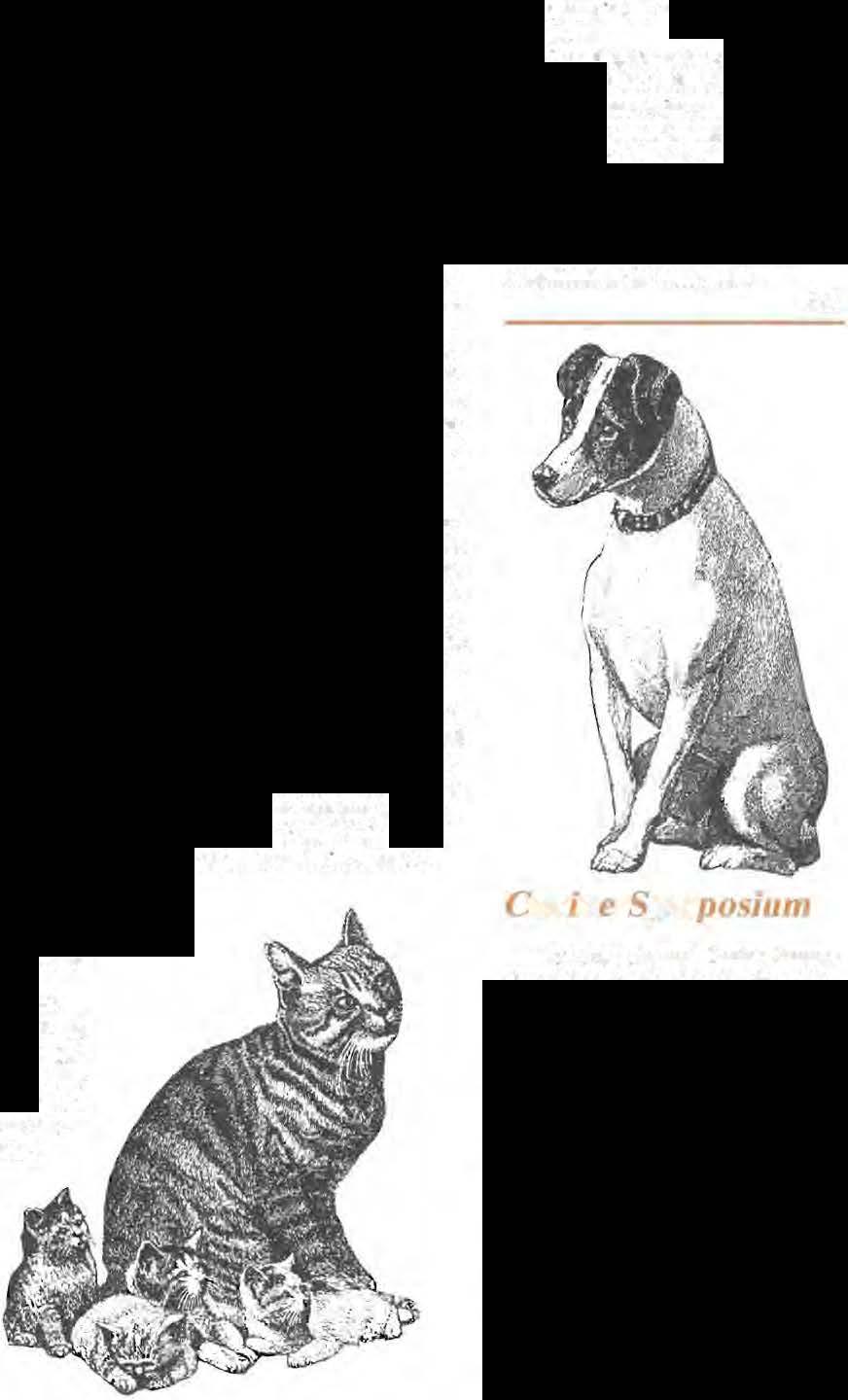
Topics covered will be thyroid disease(Dr.CaroleA. Zerbe),diseases of the geriatric dog (Dr. Meryl P. L1tt.man), canine behavior problems (Dr. Karen Overall), and ullrasouod diagnostics (Dr. Mark Saunders).
The fee for the all-day program will be $45; this includes lunch and parking. A detailed program and the reservation forms can be obtained by contactingDr.M.JosephineDeubler, VHUP, 3850 Spruce Street. Philadelphia, PA 19104.
Higl1 Speed Treadmill installed at Ne"r Bolto
production, respiratory now and upper airway pressure.
Nostrils flaring, mane nying and legs moving at a fast pace, the Standardbred leans into the breastplate, going at top speed. Only this horse is not racing for the finish line, it is running on New BoltonCenter's highspeed treadmill during a diagnostic work-up. While the staUion is moving as if in a head-to-head contest, Dr. Tulleners manipulates an endoscope, inserted into the horses' throat through a nostril, 10 examine the horses's larynx. Tulleners and students watch the image on a large TV screen to detect irregularities in the airways that may explain the noisy breathing of the racer.
Opened late this summer, the Jeffords TreadmillFacility adds a new diagnostic dimension to New Bolton Center's services. The 2,000 ft2 building encompasses a large two-story space, two staJJs and a laboratory. The centerpiece is the high-speed treadmill, enclosed by "bulletproof" polycarbonate to protect people and horses. The building is air-conditioned and equipped with a battery of fans for not-so-hot days.
"This treadmill can attain a speed of37 miles per hour." says Dr. Benson Martin, assistant professor of sports medicineand director of the treadmill facility. "Its running surface can be raised to duplicate an uphill slope of six degrees which forces the animalto
work harder. This aJiows us to simulate racing conditions. For many diagnostic procedures we need the animaJ to work up to200-240 heartbeats per minute, the heart rate at racing speed."
The speed of the running surface is controlled from a console. Horses are walked on the treadmill, up against a breast plate and are tethered. A safety harness is connected to an overhead device which automatically stops the machine should the horse stop running. The operating technician is assisred by at least one other person to keep the horse running. The equipment starts at a walking speed, then gradually accelerates to a trot and then to whatever speed is required for the diagnostic procedures.
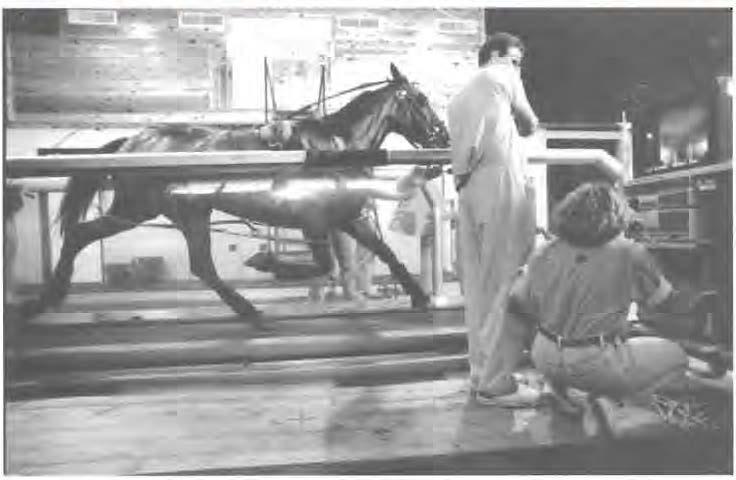
The treadmill is a service department that is used by clinicians for detailed work-ups. "It enables us, for example, to perform a cardiovascular evaluation utilizing a radiotelemetric heart monitor while the animal is running," says Dr. Martin. "Or we can use the endoscope to observe the animaJ's airways willie it is at racing speed. This is particularly important for noisy breathers and for evaJuating 'bleeders'."
The facility is used for lameness evaluation at low and high speeds. Other clinical tests, performedwillie a horse is running, measure oxygen consumption, col production, lactic acid
The treadmill is important to researchers engaged in orthopedic studies, cardiovascular and pulmonary studies, the research involving EIPH and the work on "tying up." With the treadmiJl in place, racing demands can be duplicated and the horse can be hooked up to instruments to measure such functions as respiratory now' pulmonary and arterial pressures, blood pressure, venous pressure, body temperature, oxygen consumption, C02 production, cardiac output, blood gases, lactic adds, glucose metabolism and oxygenation. Many of these measurements can be fed directly into the three computers, located in the laboratory adjacent to the treadmill. ''This facility enhances our research abilities tremendously," says Dr. Lawrence Soma, who has studied EIPH for many years.
Plans are underway to add additional diagnostic equipment to further utilize the treadmill. Funds are being raised to purchase scintigraphy equipment so bone scans can be perfom1ed to detect causes of lameness.
The JeffordsTreadmill Facility is under the auspices of the Section of Sports Medicine which is headed by Dr. William Moyer. professor of sports medicine.
The building and the acquisition of Lhe treadmill were made possible through the generosity of a number of anonymous donors, Dr. Peter 0. Blauner, Mr. and Mrs. Jesse M. Bontecou, Mr. F. Eugene Dixon, Jr., Mrs. Richard C. duPont, Mr. andMrs. Henry R.C. Elser, Mr. and Mrs. WilliamEnterunann, Mr. andMrs. M. Roy Jackson, The Jeffery Trust, Mr. and Mrs. Hardie Scott, The Sproul Foundation, Mrs. Anne French Thorington, Pennsylvania State Horse Racing Comntission,F. Eugene Dixon. Jr., chairman, John A. Ballard, commissioner, Russell B. Jones, commissioner, Kenneth E. Kirchner, executive secretary, and 1990 New Bolton Center Day at the Races in Saratoga.
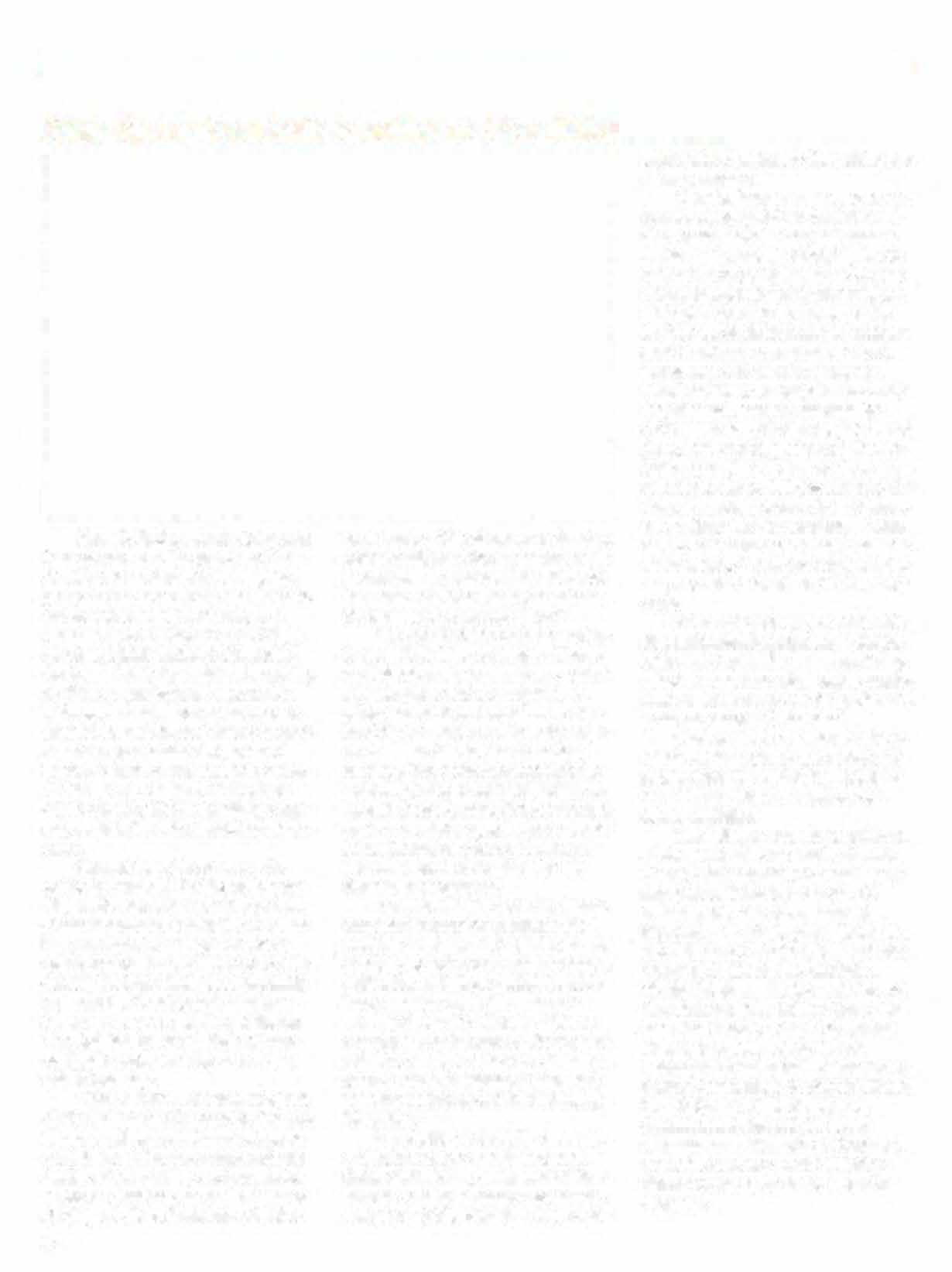
Treadmill Dedication
141idener Hosoital adds Laparoscopic Surgery
Surgeons at New BoltonCenter' George D. Widener Hospital for Large Animals have used arthroscopes and endoscopes for a number of years. This fall two laparoscopcs were added to further enhance the hospital's short procedure capabilities.
"The goal oflaparoscopic surgery is to expand our diagnostic capabilities and ultimately enable us to reduce the number of major invasive surgeries we perform," said Dr. Eric TuUeners, associate professor of surgery. "For example, it may be possible to diagnose certain causes of colic, to perform an anastomosis, repair a scrotal hernia or a ruptured bladder with lhe laparoscope. The instrumentation provides portals that let us cut, suture or staple tissue inside the body. The incisions necessary for performingJaparoscopic surgery are very smaH and hence the animal should recover aU the more quickly. Also, the hospital stay should be considerably shorter than for conventional surgery."
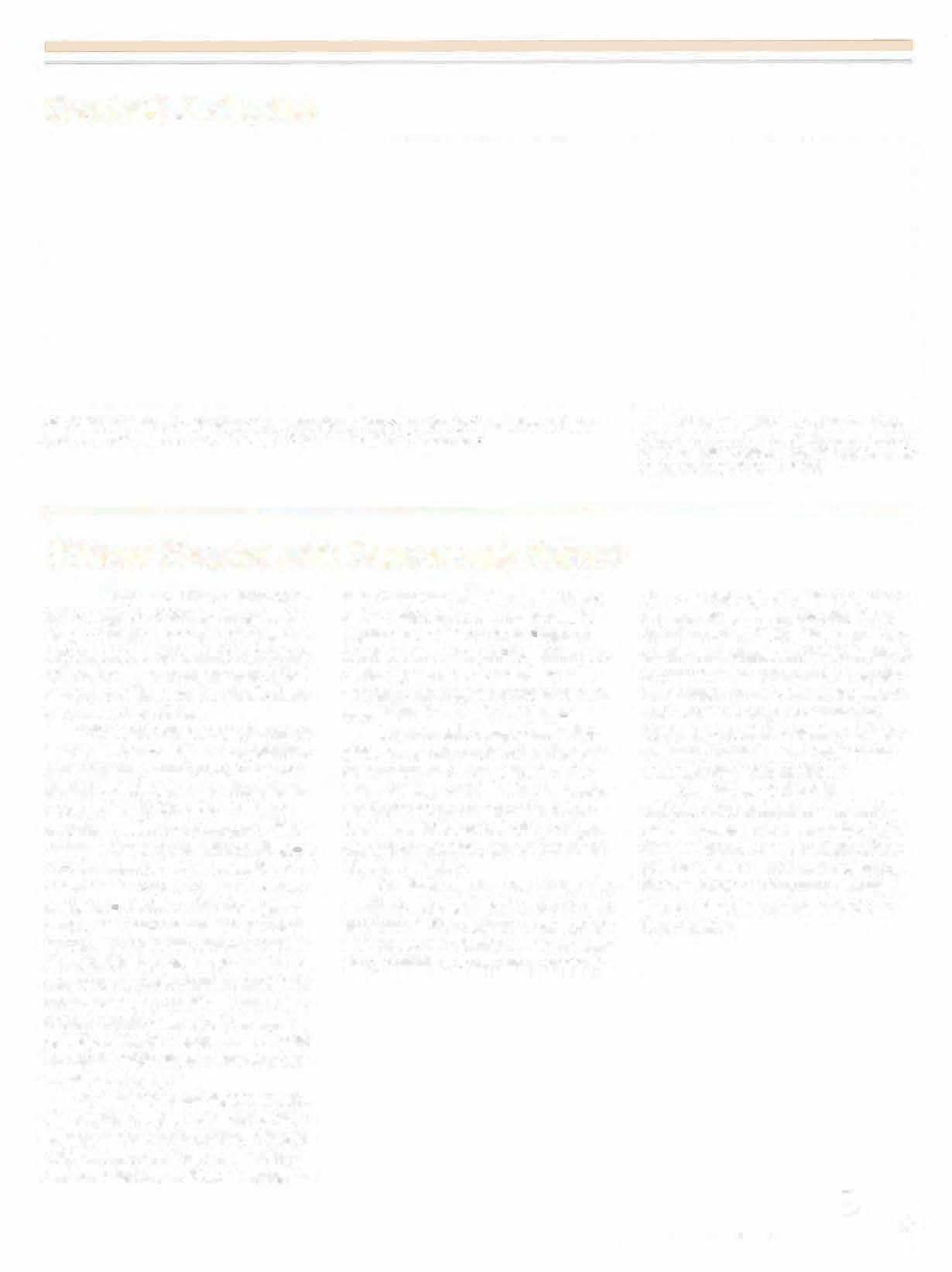
Tn addition to the laparoscopes, the hospital acquired a new Storz light source, a new Storz camera, a larger color monitor and two new printers and a medical grade VCR. This equip-

ment integrates with the existing laser, video endoscopic, and arthroscopic equipment. 1'All of these different items are interchangeable, which provides a gTeat deal of flexibility and enhances our diagnostic and treatment capabilities," said Dr. Tulleners
Laparoscopic surgery may aJso play an important role in the diagnosis and treatment of reproductive problems in large animals. For example, the laparoscope may provide a less invasive method of infertility diagnosis, embryo transfer, and treatment of blocked oviducts.
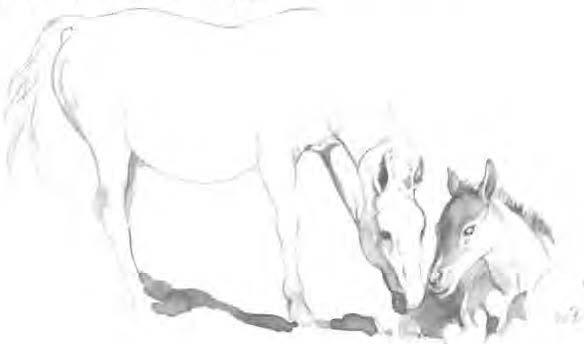
The instruments also enhance the teaching and training of students and residents. "This equipment and these techniques are relatively new to veterinary medicine. Our students and resi-
dents are now able to observe, and in the case of residents, practice there techniques," said Dr. Tulleners. "Also, the new printers and VCR enable us to generate and preserve high resolution images of the various diagnostic work ups and surgical treatments. These are excellent teaching tools for students, residents, owners, trainers and referring veterinarians."
Acquisition of the laparoscopes and the other equipment was made possible through the generosity of Dr. Charles Raker, Lawrence Baker Sheppard Professor Emeritus of Surgery. Eric Hibbard of Endosurge Medical, Joe. generously donated one of the laparoscopes.
Mr.F.EugeneDixon,Jr.,chairmano/thePennsylvaniaStoleHorseRacingCommission,oddre.s:ses �11estsdurin&thedt!dlcotiono/theJe.f/ordsTreotlmi/1Focill�l'mSeptember Airs.WolterM.Jeffords,Jr., withas.ristonce /romDeanAndrews, unveilstheplaquenoting 1/tottlte/e./fordsTreadmillFacilitywasnamedm lowitgmemor;•o/Iterhusband.isease ontrol ro r. 111
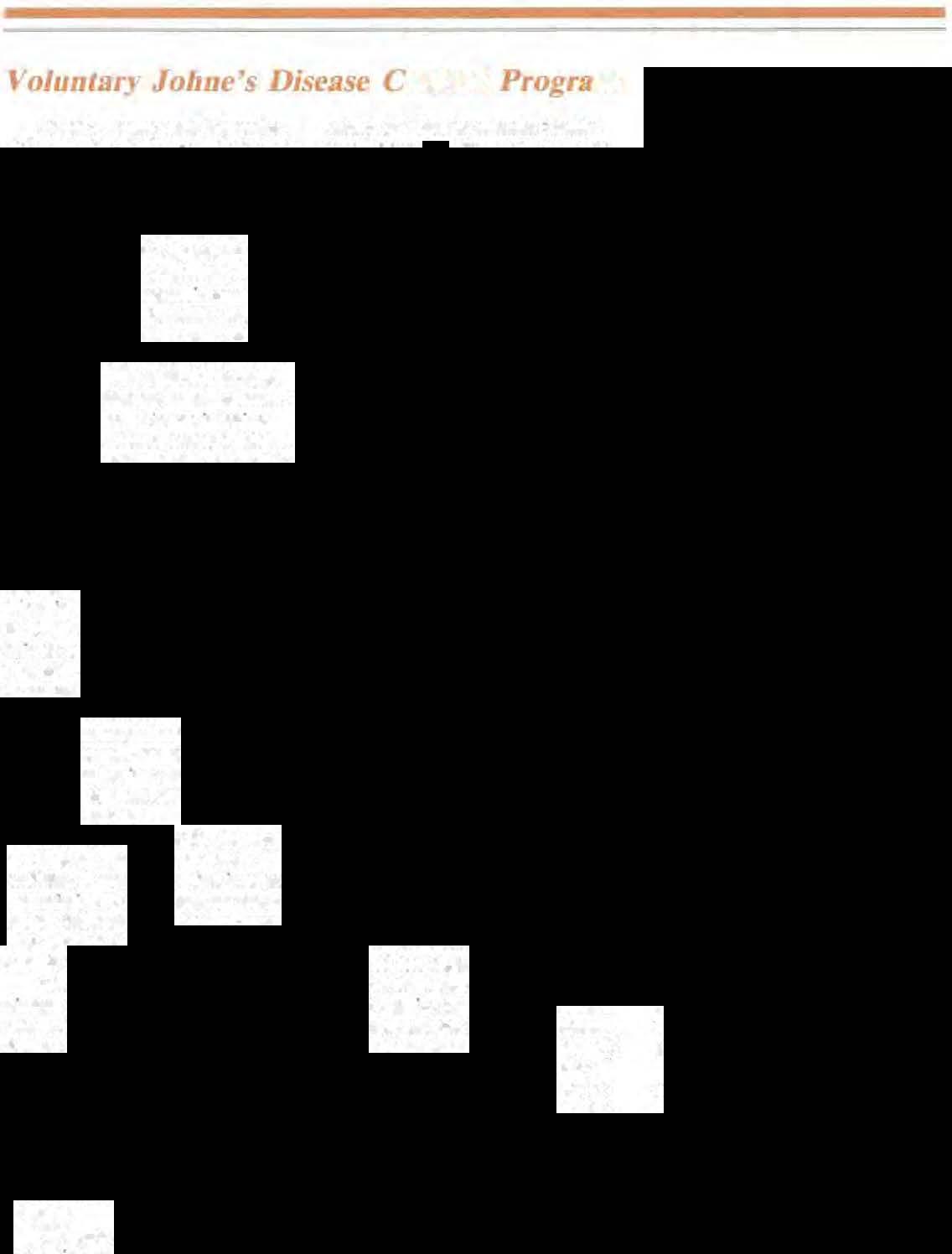
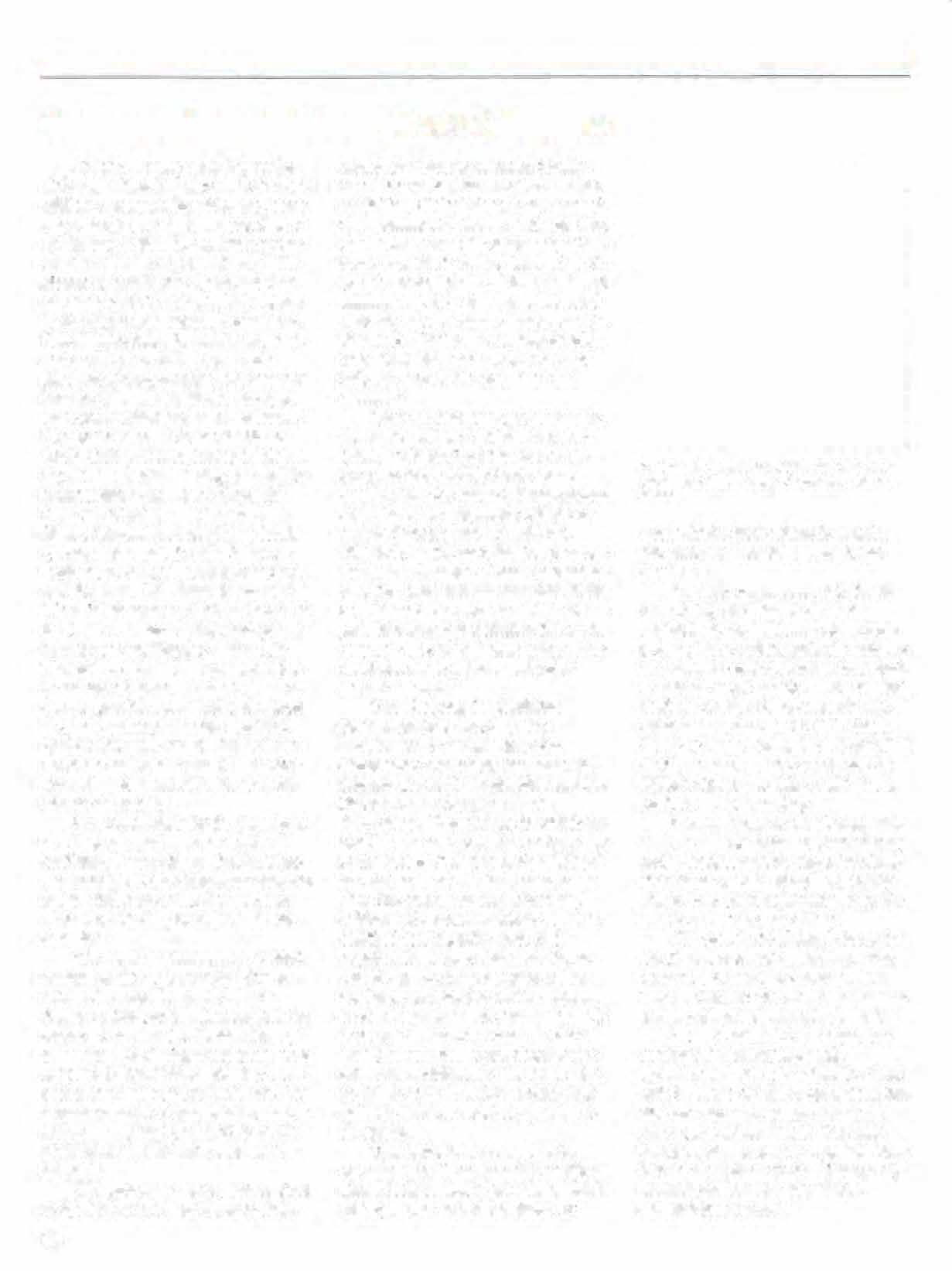
Johne's disease costs Pennsylvania's agriculture industry more than $6 million a year; nationwide, the losses may exceed $1.5 billiou, according to Dr. Robert Whitlock, associate professor of medicine at the School. "The dtsease is caused by Mycobacterium purotuberculosis, a bacterium related to the human tuberculosJs organism. The clinical disease is usually not obvious until two to three years after exposure to the organism, but may not become appareol until five to eight more years following initial infection." The bacteria settle m the ultestme where their presence causes a thickening of the inte&tinal lining, leadjog to malabsorption and loss of protein from the bloodstream into the gut. Signs of the disca'lc include low fertility, repeated mastitis infections, unthriftyness, reduced milk production, and diarrhea. The bacteria are contained 10 the manure and thus spread in the herd. Newborn calves and young ammals are particularly vulnerable. Therefore. the newborncalves need to be separated from Ibe adult cattle as soon as possible after birth and reared in cltan, uncontaminated facilities. Calfhutches and separate heifer barns facilitate separattng young stock from the adult cattle that often serve as the source of infection.
in a recent study by Dr. Raymond W. Sweeney, a�sistant professor of medicine; it was shown that m utero transmiSSIOn ofIbe disease can occur in heavily infected cows, thus in some cases 1 he calf may be born with the infe<:tioo.
The state implemented a Johne's dJsease control program in J973 to reduce the prevalertce of Johne's disease and to provide farmers with the means to conrrol the disease through management techmques and diagnostic suppon. Despite these efforts a comprehensive study by Dr. Whitlock, Dr. Sweeney and the Pennsylvania research team showed that about 25% of the 15,000 dairy herds in the state may be infected.
The program emphasized control of the d1sease in a herd through eracll-
cation of afflicted animals. Studies have shown that removal of animals exhibiting clinical signs is not enough to eliminate the disease. "If you have one or two cows with clinical signs in a herd, it is Likely that at least 15 to 25 others are -infected. Of those infected anjmals only 25-50% can be detected with the current tests,:' explained Dr. Whitlock. "Thus the removal of stock with detectable symptoms does not help to control the spread of the disease.''
Now the state has launched a new, voluntary Johne's certification program. "The major objective of the program is to certify herds 'Testnegative' for the Johne's disease rather than focus the diagnostic efforts on known infected herds," <;aid Dr-. Wltidock. ''The certification program involves a number of tests and guidelines for herd management that must · be followed. Farmers need to be able to purchase herd replacements that are at very low risk of infection rather than purchase cattle with an unknown Johne's status."
The first step m obtaining paratuberculosis test-negative certification is completion of a cooperative agreement involving the farmer, t,he herd veterinarian and the Pennsylvania Department of Agriculture. Those herds for which the herd owner and veterinarian can state to the best of their knowledge the herd has not had any clinical cases in the past five years nor any laboratory evidence of paratuberculosis would be certified test negative after two negative herd tests. All other herds would requtre three negative whole herd tests with the last test to be based on fecal culture rather than serology. If each test is negative, then the herd would becertified as test negative. To maintain certification, the herd must be tested every 10 to 14 months. Only animals over two years of age need to be tested.
The initial test is an ELISA screening test. Ifan animal is positive, then a fecal culture is performed within 21 days. This test takes about 12
weeks. If the fecal culture is negative, the animal is considered to be test negative.
Another requirement for herds undergoing certification is that additionstothe herd must come from progeny born and raised in the herd. or be animals from a certified free herd. If animals from another, non-certified, herd are added, these must be kept isolated and must be ELISA tested within 15 days. Animals in a certified herd also may not be vaccinated of Johne's disease as this would give a positive ELISA reading.
Farmersagree to provide separate stalls or calving areas forcows nearing parturition, to remove the calves from their dams within 24 hours or birth, and to rear them separately from the adults until one year of age.
The cost of the testing is borne by the Department of Agriculture. The herd owner does have to pay the veterinarian for the herd examination and for diagnostic sample collection.
"Dairy cattle are an important commodity for Pennsylvania agriculture," said Dr. Whitlock. "Not only in terms of milk production, but also for export to other states and other parts of the world. But only h�lthy animals can be exported, th-us it is in the industry's best tnterest to increase the number of Johne's certified-free herds."
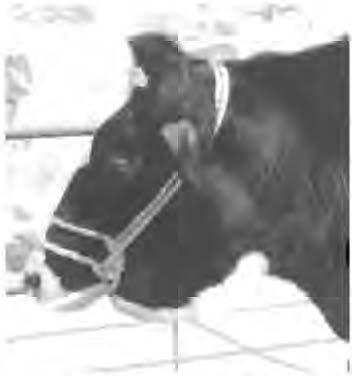
In addition to Dr. Whitlock and Dr. Sweeney from Penn, Dr. Lawrence T. Hutchinson from Penn State, and Dr. Max Van Buskirk from the Bureau of Animal Industry were the primary developers of the paratuberculosis testnegative certification program.
While this program is under way, research is continuing to develop faster test methods and to refme the existing tests. The Penn team has been able to decreasethe fecal testtime from 16 weeks to 12 weeks by employing special centrifuging teclmiques that concentrate the sample. Dr. Sweeney is now looking to test milk forthepresenceofthe antibody to the Johne's organism as an early indicator of infection. He is developing filtrationteclmiques forlarge volumes of milk to concentrate the sample. Because M. paratuberculosis is a such a slow growing organism, bacteria need w be present at a certain concentration before they will become evident in culture.
Johne's disease is not only a threat to agriculture, it also affects other
LAH Moves to l'le»r Quarters
Herrold's egg yolk media with the typically appearing colonies for Mycobacterium paratuberculoses. The Johne's organism often requires 10-12 weeks 10 appear visible on the media surface.
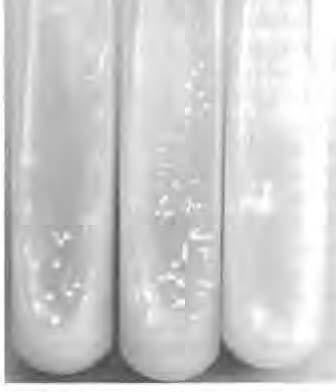
ruminants such as endangered species in zoos. A National Task Force on Johne's Disease has been formed to combat the disease. Dr. Whitlock was appointed, along with Dr. Max Van Buskirk. Ona historic note, the disease was first identified to be present in the USA by Dr. Leonard Pearson, in 1905. Dr. Pearson served as thethirddean of the School, from 1897 to 1909.
Dr. Donald Abt, Robert R. Marshak Term Professor of Aquatic Animal Medicine, is anold hand at moving laboratory facilities from one building to another. "I was at the School when we moved offices and laboratories into the Rosenthal Building. 1 moved again when VHUP opened," he said. "This current move was ajoy. We now have ample excellent research and service space on the second floor ofthe brand new Marine Resources Center (MRC). the latest addition to the Marine Biological Laboratory (MBL) in Woods Hole.''
The space has been designed specifically for the research, service and teaching programs of the Laboratory for Marine Animal Health (LMAH} and AQUAVE'f® in addition to providing the MBL with essential new space for their mariculture research efforts. The facilities include special holding tanks for maintaining and culturing healthy marine organisms and isolation tanks appropriate for research on diseased organisms. The one-of-a-kind seawater life support system in the MRCsimultaneously can provide up to eighttailor mademarine environments to the animal holding tanks.
The LMAH is staffed by four veterinary scientists with specialty training in microbiology, pathology and epidemiology and a parHimepar-
asitologist, based at the main campus in Philadelphia. The professional staff aresupported by three technicians and a secretary.
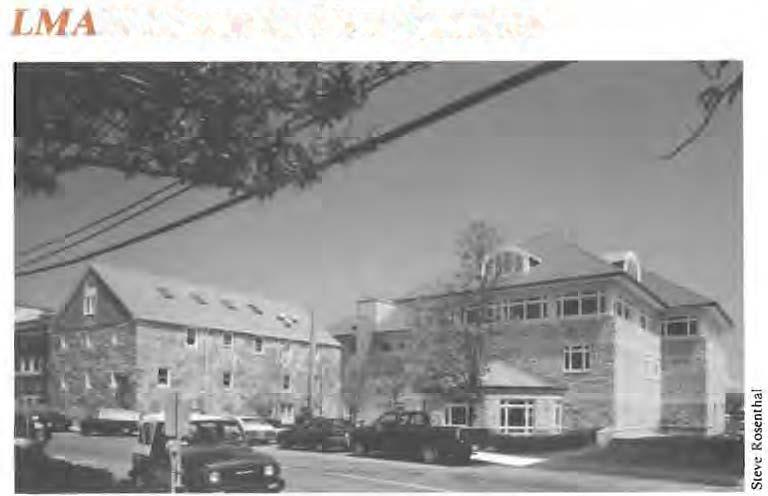
The LMAH provides diagnostic veterinary services for laboratory animal needs ofthe Marine Biological Laboratory, the Woods Hole Oceanographic Institution, and the Northeast Fisheries Research Center of the National Marine Fishery Service. The research effort of the LMAH is primarily focused on naturally occurring diseases of marine animals used as laboratory animals. In addition, numerous research projects arise from heallh problems encountered by investigators seeking to culture a given marine organism in the artificial environment of the research laboratory or within a commercial aquaculture facility.
Examples of current research projects include studies on: the life cycle of a shark cestode (tapeworm); ocular diseases in captive pinnipeds; mortalities in juvenile seed oysters: dinoflagellate infection of oysters; Pseudomonas infections in skates and a parasiticinfection ofannelid worms.
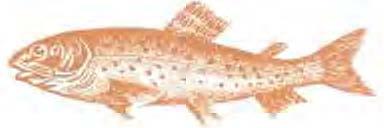
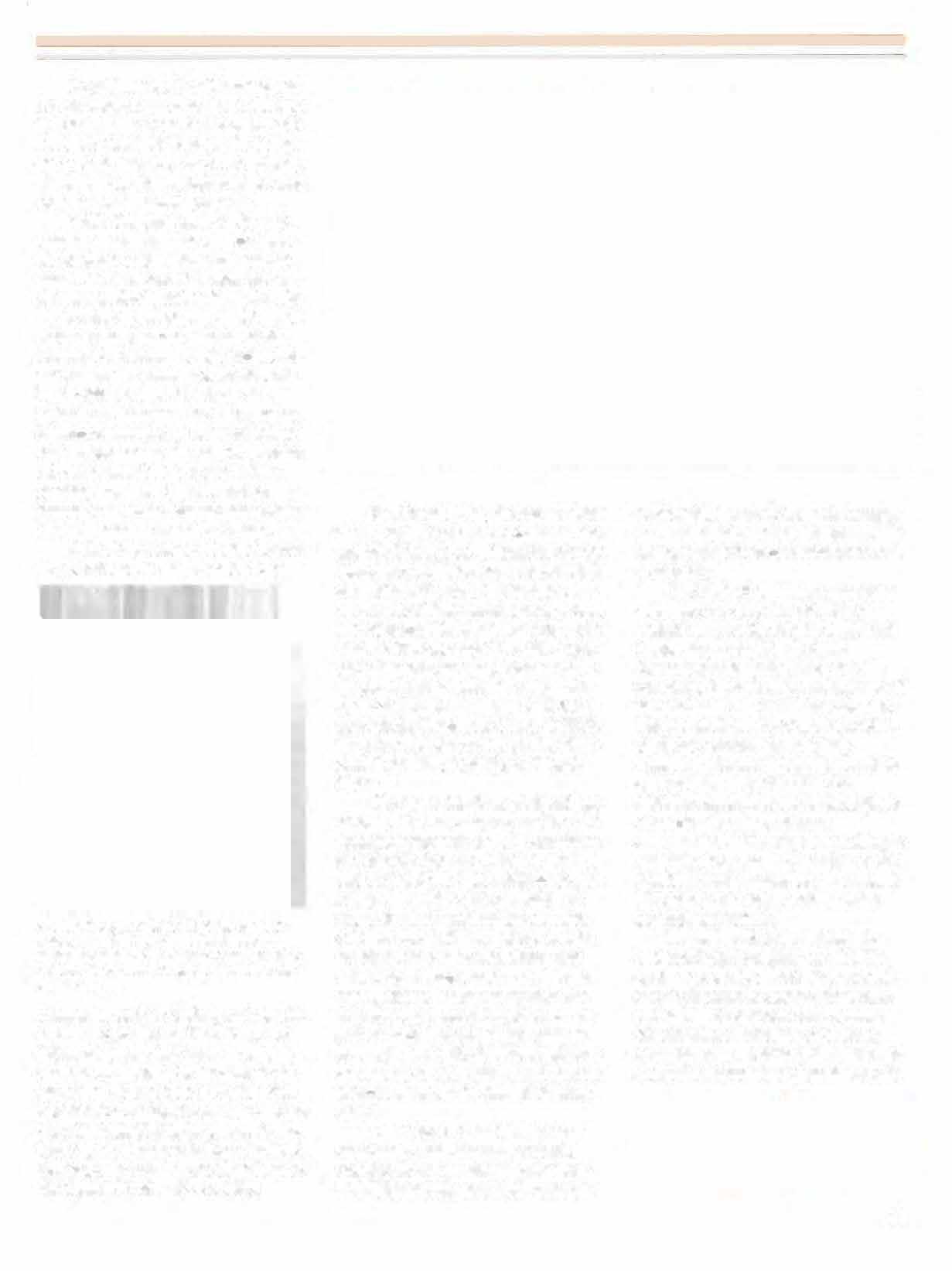
Membersofthe Centerfor Veterinary Critical Care and other VHUP staffers made their presence feltat the Third International Veterinary Emergency and Critical Car�: Symposium in San Amonio, TX. Papers were presented by Drs. Michttel G. Conzemius, Urs Giger, Sue Hackner, Joan Hendricks, Lesley King, Kathryn Michel, Robert Moreau, Cynthia Otto, and Susan Wcslmt.reland. Sally Powell and Nancy Shaffran of the ES and JCU nursing staff also presented papers, as did Kathleen Dunn, VHUP's social worker.
Dr. Linda Keller. research assistant professor, was an invttcd speaker at a symposium entitled "lmproved diagnosisofavian diseases using molecular techniques" held in conjunction wirh the AVMA meeting in Bostonin July. Dr. Keller presented a paper "The usc of monoclonal antibodies specific for Salmonella enterilidrs as diagnostic and research reagents." Or. KeJJer also presented a paperat the Avian MedicineSection of Lhe meeting, entitled "Tracking Salmonella enteritidis through the ovarian tissue of laying hens with specific monoclonal antibodies." The co-authors of this paper are Drs. Charles Benson and RobertEckroade.
Dr. Gary Smith, associate professor in population biology and epidemiology, was an invited keynote speaker at the Joint Meeting of the Australian and New Zealand Societies for Parasitology an September in Auckland, New Zealand. After the conference Dr.Smith gave an invited lecture at the Wallaceville Animal Research Centre, New Zealand Agriculture Research Institute, and at the McMaster Laboratory ofCSIRO in Sydney, Australia. Each of the talks deah with ''MatJ1ematical models of infectious diseases of Veterinary Importance." Dr Smith has been
invited to participate in an FAO Expert Consultant Committee in Nairobi, Kenya in November. He will give two papers on the implementation of mathematical models of veterinary diseases in developing countries. Dr. Smith hasbeeninvited to participate in the "Epidemic Models" research program at the IsaacNewton Institute of Mathematics, University of Cambridge, U.K. from March to May, L993.
Or. Gall Smith, V'74, associate professor of surgery, received the second year of funding from Ralston Purina for hip dysplasia research. The Morris Animal Foundation and the Seeing Eye, Jnc. awarded him a third year grant for study of hip dysplasia heritability. ln September Or Smith was invited to Sweden where he gave three scientific presentations at an International Symposium on hjp and kneejoint lesions in the Dog and Man. Dr. Smith waselected to the board of directors ofthe Veterinary Orthopedic Society.
Dr. Beth Callfln, V'88, transfusion medicine fellow, Dr. Kenneth L.Orobatz, assistant professor of medicine, and Dr. Jerry Waddle, consultant in oncology, are new diplomates in internal medicine. nr. Sherrill Davison, V'83 , assistant professor in avian medicine and poultry pathology, is a new diplomate of the American College of Poultry Veterinarians.
Dr. Donald Abt, V'61, Robert R. Marshak Term Professor of Aquatic Animal Medicine and Pathology, received the Merck Creativity Award for his leadership in theAQUAVET® program. The award is sponsored by Merck AgVet. Dr. Abt bas been installed as a board member of the l.nternational Association for Aquatic Animal Medicine.
Christine Lund), V'%, has the ose

of a microscope donated by the University of Pennsylvania Women'll Club in honor of Doris and Bill Boucher. In the Fall of 1994 the microscope will be given to another incoming student.
Kathleen Dunn, VHUP's social worker, presented apaper at the Sixth lmernational Congress of the Delta Society in Montreal in July. The coauthors were Dr. Aaron H. Katcher and Dr. Kenneth Bovee.
Or. Murray lobst, V'43, has expanded his book "Do You?" It is published by the L.J.B. Foundation; the firstedition was published in 1974.

Dr. Gustavo D. Aguirre, V'68, professor of ophthalmology, and Dr. Mark E. Haskins, V'69, professor of pathology, were elected to the Fellowship of the College of Physicians of Philadelphia.
Or. Colin E. Harvey, professor of surgery and demistry, recently completed work on a comprehensive textbook of small animal dentistry, written jointly with Dr. Peter Emily. The book wiU be published by C.V. Mosby Co. early in 1993. Dr. Harvey also edited an issue of the Veteri11ary Clinics of North America on Feline Dentistry, to be published in November. He recently presented papers at the inaugural meeting of the European Veterinary Dental Society in Rome, the inaugural meeting of the Spanish Veterinary Surgical Society in Madrid, British Veterinary Dental Society and British Small Animal Veterinary Association (Birmingham), Regional CNVSPA(Margine, France), and The free University of Berlin (Germany), and conducted continuing education wet-labsat the Birmingham University (England) Dental School, Complutense University of Madrid (Spain). and the School of Dental Medicine, University of Pennsylvania. He was a member of the Scientific
Organizing Committee and presented papers and practicums at the World Small Animal Veterinary Association Congress in Rome. Dr. Harvey is engaged in collaborative projects with the University ofKansas, Kansas State University, Nihon University (Japan), and Liverpool University (England).
Dr. Charles Benson, professor of microbiology, has been appointed an advisor to the National Committee for Clinical Laboratory Standards.
Mr. James Hayden, a research specialist and photographer in the department of pathobiology, has been board-certified as a registered biological photographer (RBP) by the Biological Photographic Association. He also received an Honorable Mention in the 1992 Nikon Small World Competition for his clarkfield transparency "Adnexal (The Picasso) Nevus."
Dr. Mattie Hendrick. V'78, ass1stant professor of pathology, Dr. Thomas Van Winkle, V'75, assistam professor of pathology, and Dr. Alan M. Kelly, professor ofpathology, gave presentations at the C.L. Davis European Pathology Symposium, held in York, England.
Dr. Phillip Scott, assistam professor of parasitology, was an invited speaker at the International Congress of Immunology, held in Budapest, Hungary. He presented a featured paper on the role of Natural Killer CeUs in the immune regulation ofleishmaniasis. Dr. Scottwas one of the two co-organizers of the 13th Annual Philadelphia Regional Immunology Conference, held in October.
Or. Thomas Nolan, clinical veterinary parasitologist, and Dr. Gerhard Scbad, professor of parasitology, presented papers at the annual national meeting of the American Association of Veterinary Parasitologists held in conjunction with the AVMA meeting in Boston.
Dr. Roxanna Smolovitz, research associate at the Laboratory of Aquatic Animal HealU1 and Pathology, has received a grant from the National Marine Fisheries Service to study Parasile Problems in JuvenileOysters. The Department of Agnculture,
Northeast Regional Aquaculture Center, has awarded Dr. Smolovitz a grant to study Juvenile Mortality in Oysters.
Dr. Roselyn Eisenberg, professor of microbiology, has had her NIH Training Grant in Virology renewed for four more years. This funds six predoctoral positions. She is principal investigator on a Program Project grant on "Pathogenesis of Persistent Viral Injury to the Central Nervous System" that has just been funded. This program project funds three projects in the medical school and one here.
Or. James W. Buchanan, professor of cardiology. received an award for best paper in 1991-92 utilizing data from the National Veterinary Medical Database for his chapter entitled: "Causes and Prevalence ofCardiovascular Disease'' in Current Veterinary Therapy XI. Dr. Buchanan presented the Annual Gary Bolton Memorial Lecture at the Academy of Veterinary Cardiology/ AAHA meeting in New Orleans, LA in May. That same month hepresenteda paper at the American College of Veterinary Medicine lOth Annual Forum in San Diego, CA.
Dr. Richard J. Clement, V'77, a practitioner in the Washington D.C. area, received a patent for a new X-ray ID process for identifying x-rays and x-ray envelopes.
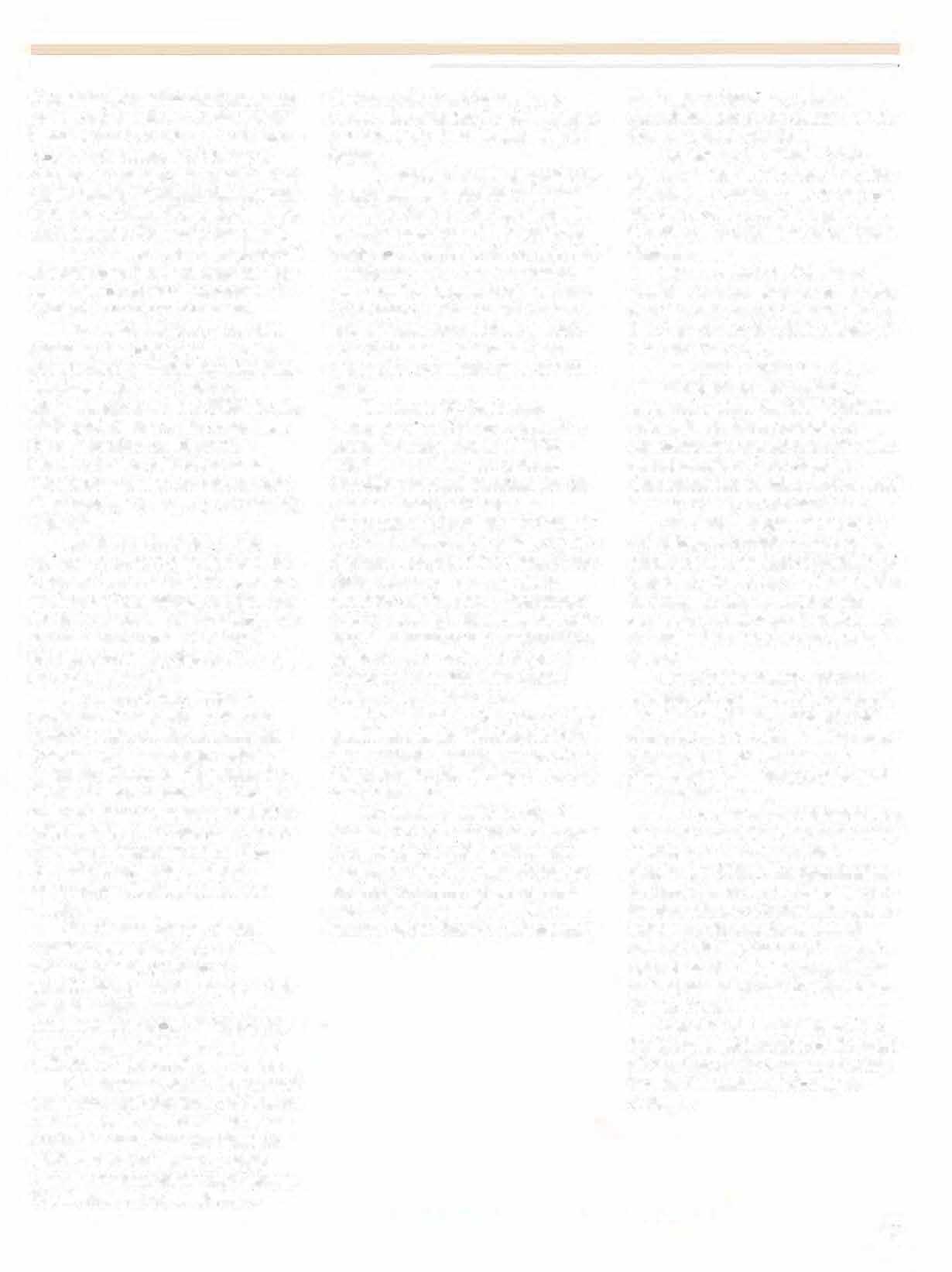
Dr. James S. Reid, V'62, of Vienna, VA was elected to a six year term on the Council of Veterinary Services by the American Veterinary Medical Association at the annual meeting in August. Dr. Reid is a member of the board of directors of
the Vtrgima Vetennary Medical Association and is the director of the Vienna Animal Hospital.

Or. Wulter M. Woolf, v·6o, appears all the "Pet Doctor" on the Tampa NBC station (WFLA-TV) on the NewsWatch 8 at Noon program. The show is broadcast live from Busch Gardens.
Penn's School of Veterinary Medicine was pronounced to be "the best veterinary school in the world'' by Bill Cosby on theSep. 29th episodeof You Bet Your Life.
Dr. Robert Washabau, V'82, assistant professor of medicine, presented a paper entitled "Calciumactivated potassium channels in gastrointestinal smooth muscle" at the annual meeting of the American Gastrointestinal Motility Society, held in Lake Tahoe, CA in September.
Or. David Knight, professor of cardiology. presented a paper at the meeting to the Japanese Association oJ Veterinary Cardiology in June. While in Japan, he also lectured at the veterinary school ofAzabu University, an institution with close ties to the School.
Dr. Steven Fluharty, associate professor of pharmacology. hasjoined Dr. Adrian Morrison, professor of anatomy, as a co-editor of the series, Progress in Psychobiology and Physiological Psychology. published by Academic Press.
Dr. Corinne R. Sweeney, associate professor of medicine, has been elected president of the Comparative Respiratory Society, an organization that provides an international forum for theexchange ofinformation about respiratory diseases in a1J animal species including humans. The 1993 annual meeting of the group will be held September26 and 27, 1993 at New Bolton Center.
Dean Edwin J. Andrews, V'67, has beenelecteda member of the board of directors of the American Society for the Prevention of Cruelty to Animals.
Dr. David Krifcbevsky, adjunct professor of biochemistry. delivered the Quartercentenary Lecture at a symposium of The Nutrition Society (U.K), hdd at Trinity College, Dub(jn, Ireland.
Dr. William Mortun, V'67, and colleagues at the University of Washington irt Seattle have developed a new ammal model for HlV-1 by showing that pigtail macaques can be infected w;th the virus.
Dr. Jorge Guerrero, adjunct professor or parasitology, has been named "Vniver�al Veterinarian of 1992.'' The award is given under the auspices of the World Veterinary Assoctation. The award was presented in July in Salamanca, Spain.
Or. Donald 1:. Patterson, Charlotte Newton Sheppard Professor of Medicine, rece1ved the 1992 World Small Animal Veterinary Association Scientific Achievement Award. It was presented nt the organization's meeting in Rome m September.
Dr. Raymond W. Sweeuey, V'82, assistant professor of medictne, is the recipient of the North American Outstanding Teacher Award. The award was pre�cnted to Dr. Sweeney by Norden at the meetmg of the American Association of Veterinary Medical Colleges 10 .Boston in August
Dr. Crai� Rowso, V'48, was honored by the American Association of Bovine Practitioners and received the 1992 beef award, sponsored by Merck AgVel. As part of the award Merck AgVet presented $l,500 10 the School.
Appointments nnd Pr o
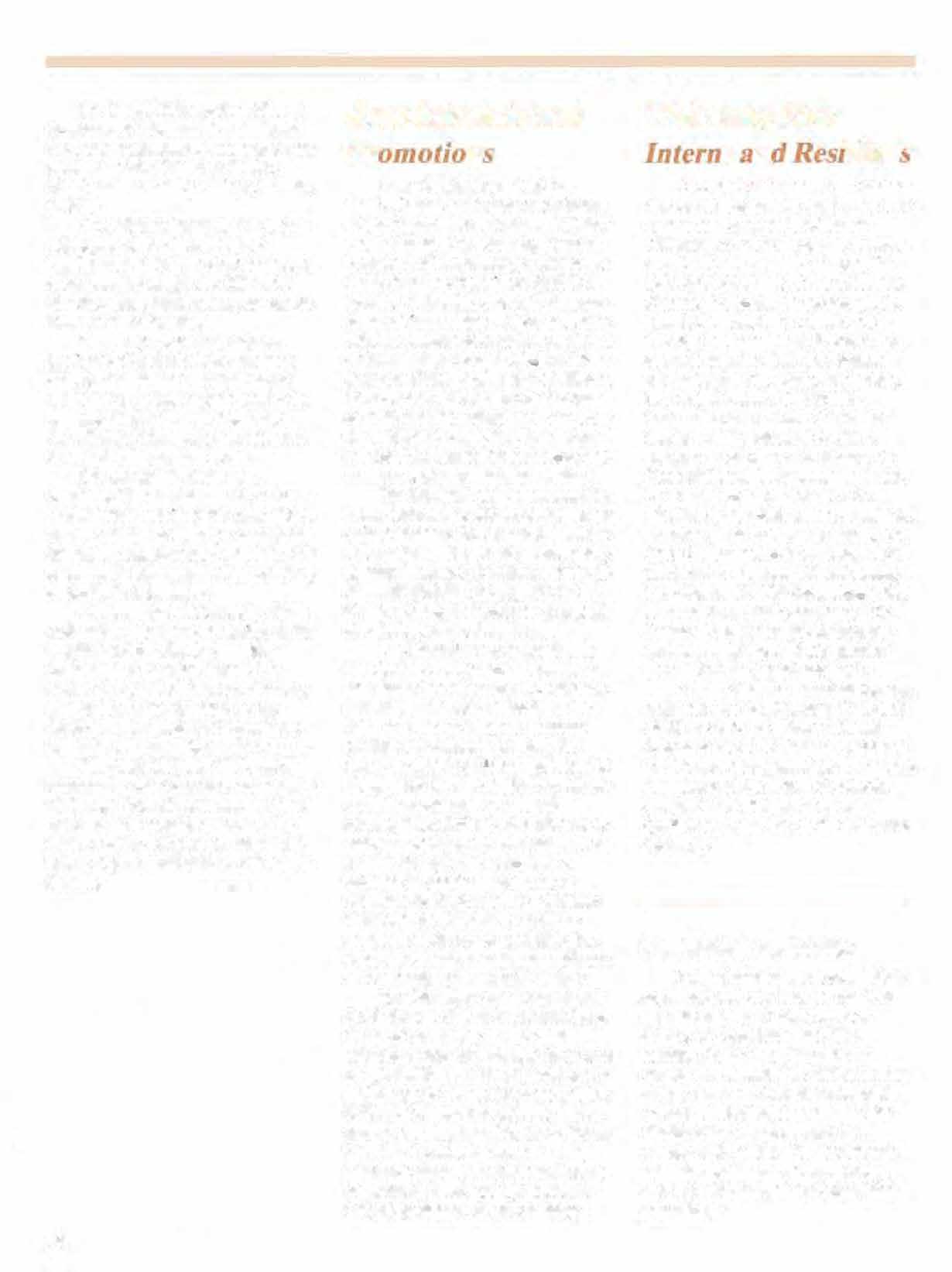
Peter J. Felsburg, V.M.D., Ph.D., joinedthe facultyaschairman of IheDepartmentof Clinical Studies/ Philadelphia. Dr. Felsburg, Trustee Professor oflmmunology, returned to Penn from the Vetennary School at Purdue University where he was professorofImmunology. Priorto that he held the position ofassociateprofessor ofimmunologyat theCollege of Veterinary Medicine, University of Illinois.
Dr. Felsburg is amemberof the Class of 1969 and hereceived his Ph.D. from the University in 1973. His research tnterests are clmica1 immunology and immune-mediated diseases of dogs.
The following were promoted: Dr. PeterDodson to professorofanatomyin animal biology> Dr. Steven J. Fluharty to associate professor of pharmacology in animal biology; Dr. James Orsini to associateprofessorofsurgery; Dr. Gary Smith to associate professor of population biology and epidemiology.
The following were appointed: Dr. Sandra Perkowski as lecturer in anesthesia; Dr. Kenneth L. Drobatz as assistant professor of medicine; Dr. John C. Fyfe as research assistant professor in medical genetics; Dr. David E. Holt as assrstant professor of surgery; Dr. K. Ann Jeglum as adjunct associate professor of medical oncology: Dr. Erika L. F. Holzbauras assistant professor of biochemistry in animal biology; Dr. Michaela A. Kristula as assistant professor of Medicine at the George D. Widener Hospital; Dr. Wendy Freeman as asststant professor of me�icine; Dr. John R. Pehrsonas assistant professor of biochemistry in animal biology.
The following were reappointed: Dr. Deborah Gillette as assistant professor of pathology in the clinjcal educator track; Dr. Philipp Scott and Dr. Amiralli as assistant professors in pathology; Dr. Jorge Guerrero and Dr. William Campbell as adjunct professors of parasitology; Dr. Jerry Franz, Dr. Clay Frederick, and Dr. Larry Lomax asadjunctassociateprofessors of pathology; Dr. George Davis as adjunct professor of parasitology.
U'elcome, Nen'
J Dr � 'IJ ..·fltJnl ·
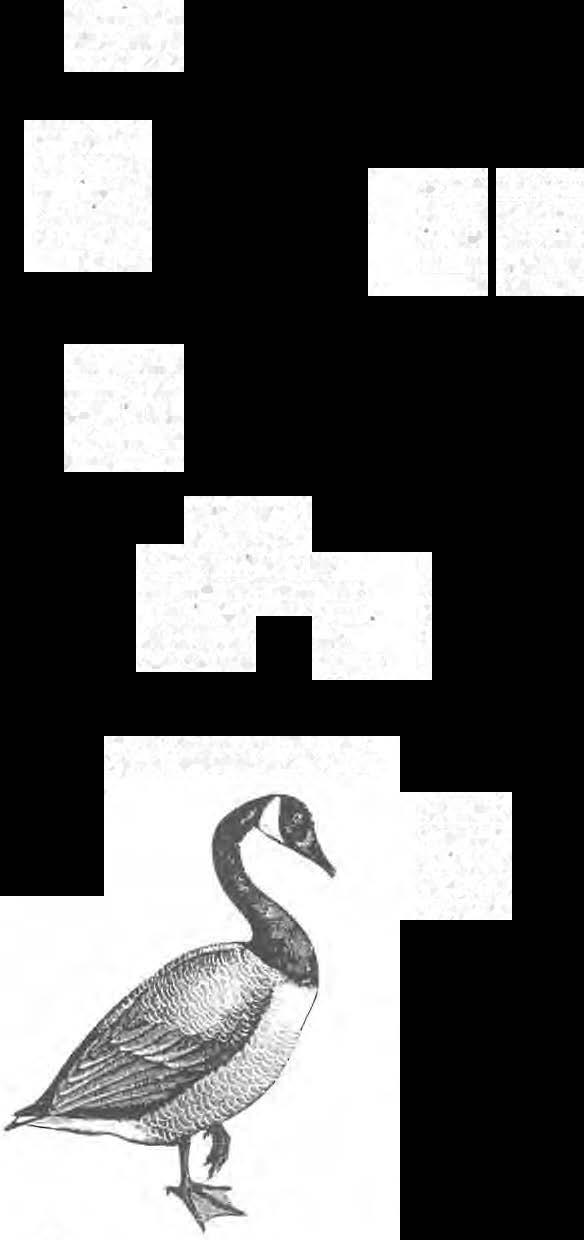
On July I a new group ofresidents and interns joined the staff at VHUP and at the George D. Widener Hospital. At VHUP the new interns are: Dr. Lillian Ruth Aronson, Dr. Paul John Cappiello, Dr. Dorothy M. Cimino, Dr. Ruth A. Darrigrand, Dr. Denise A. Elliott, Dr. Susan Taft Floyd, Dr. Petra Anna Lackner, Dr. Stefanie Jennifer Lin, Dr. Joanna Terese Manz, Dr. Joerg M. Steiner, Dr. Robin Pullen. The VHUP residents are: Dr. Lori W. Cabell (surgery-orthopedics), Dr. Jill L. Sammarco (surgery-soft tissue}, Dr. Chantal Parent(emergency medicine), Dr. Anna Fang (radiology), Dr. Monika Griot-Wenk and Dr. Nancy A. Sanders (small animal medicine), Dr. Carl D. Sammarco (cardiology), Dr. Christine A. Johnson (dermatology), Dr. Charles H. Vite (neurology), Dr. Eva Marie Sarkiala (dentistry}, Dr. Stanley D. Dannemiller (laboratory animal medicine), and Dr. Laurie Sorrell-Griffin (anesthesiology).
At tbe Widener Hospital the new residents are: Dr. Caroline Twitchell (field service), Dr. Eric Twitchell (reproduction), Dr. Nancy Diehl and Dr. Peyton Jones (medicine), Dr. Jan Hawkins and Dr. Francois Martin (surgery), Dr. Enrique Correa (pathology), and Dr. Javier Martinez (poultry).
Parasitology Meeting
The Laboratory for Parasitology organized and was host to the 67th annual meeting of the American Society of Parasitologists. The meeting, held at the Penn Tower Hotel, was attended by 400 scientists, mostly from the United States and Canada, including several from the Pacific Rim Countries and from Europe and Africa. Dr. Jay Farrell, associate professor of parasitology, was the chairman of the organizing committee.
J'HUP Endoscooe Enhanced
The depth ofVHUP'sendoscopy service was enhanced by the addition of a new, more powerful light source and a 100 milJimeter bronchoscope. This equipment was made possible through thegenerosityofMr. and Mrs. Jay Remer, Villanova.
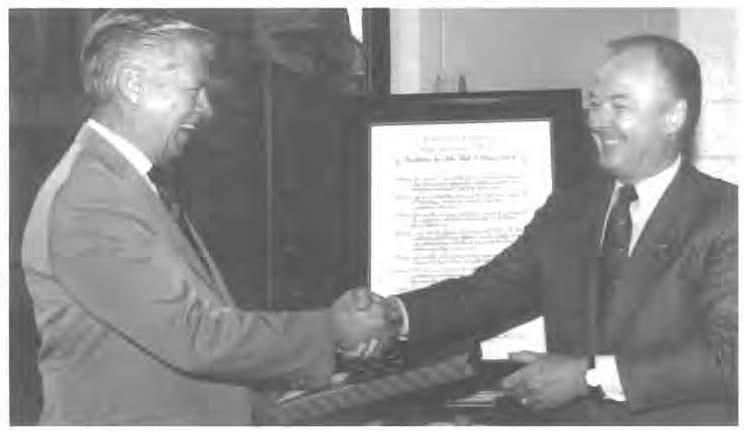
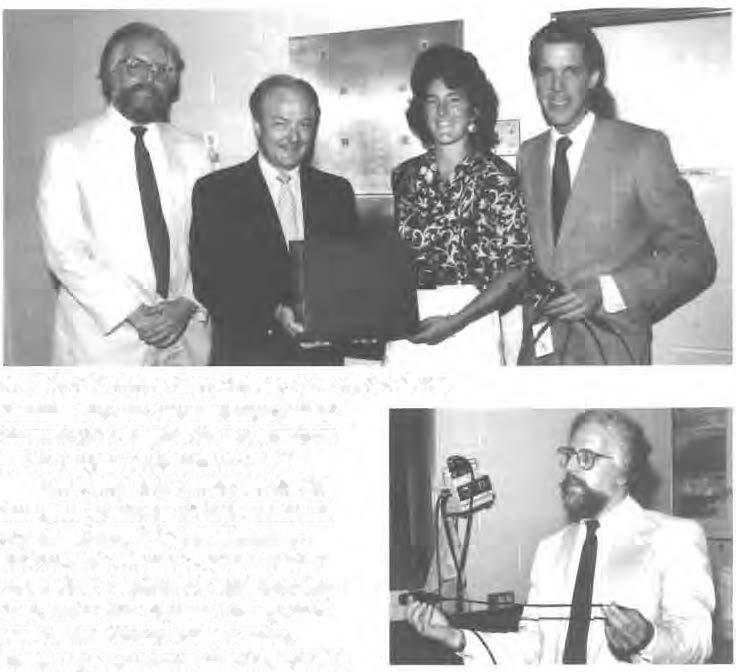
"The new light source tremendouslyenhancesourabilitytoperform gastrointestinal endoscopy as well as bronchoscopyin largeand giant breed dogs." says Dr. Robert Washabau, assistant professor of medicine. "The other light source was not sufficiently brightenough forstudies inlargeand giant breeddogs. And, theotherbronchoscope was not of sufficiem length for these larger dogs. With the new equipmentwecan nowofferthesame services to aU breeds of dogs."
The new equipment adds to the teaching facilitiesatthehospitalas it is integrated intothe existing videoarray. The videoarrayallows foranumberof peopletoobserveagivenprocedure. ll took nine months for the bronchoscopeto arrive. Thereason, according to Dr. Washabau, "an entire production line had to be shut down to
manufacture the bronchoscope, which because ofits length, did notconform to the regular production run., Mary and Jay Remer made the donation in honor oftheir maternal grandmothers, Virginia Simmons duPont, Mr. Remer's grandmother who raised greyhounds and sporting dogs under the Squirrel Run prefix, and Lillian Wood Febiger, Mrs. Remer'sgrandmotherwhohadDandie Dinmont and Sealyham terriers.
Jacl' Mara/Hill's Dean's Scholarship
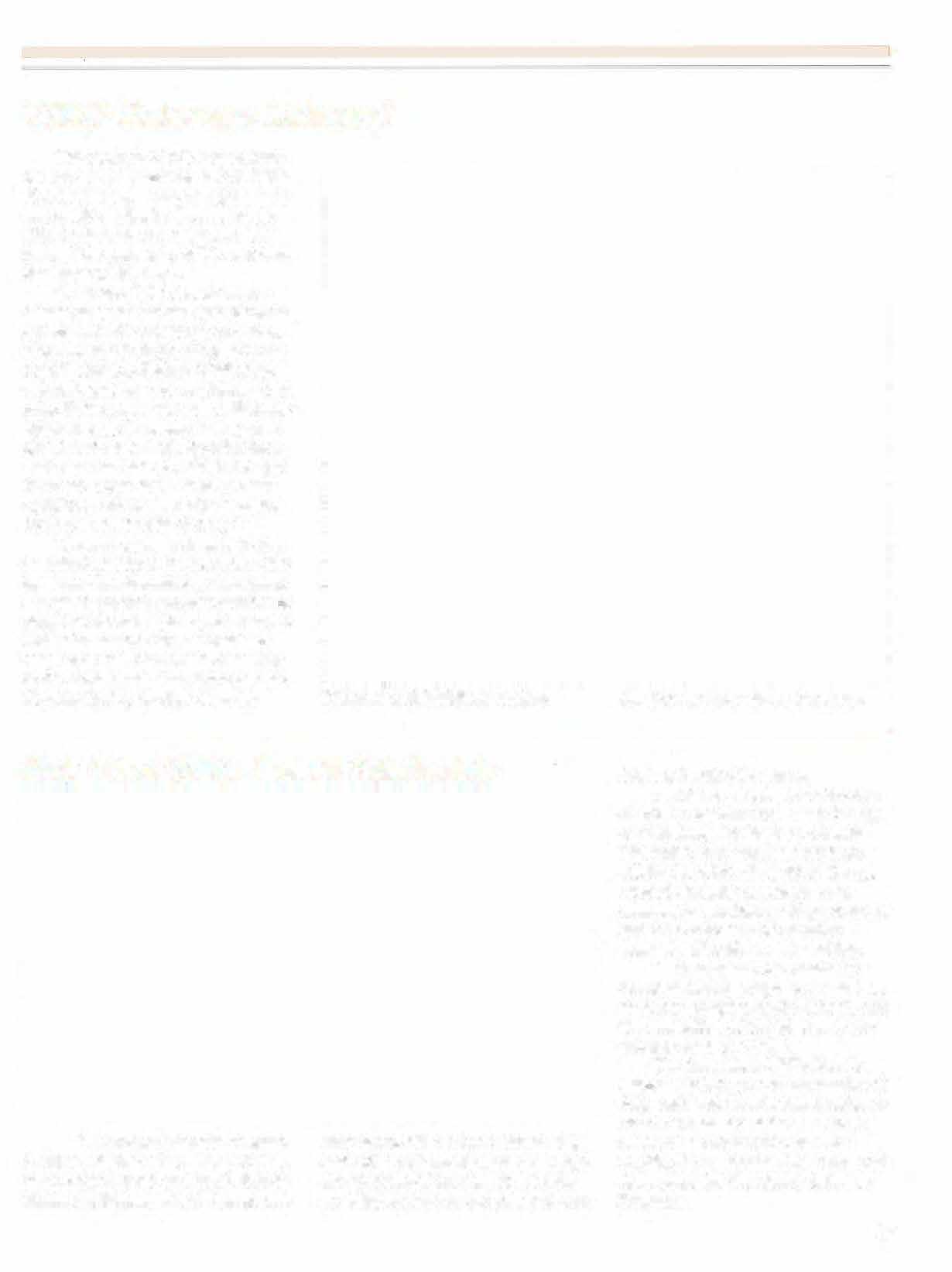
Student Feeding Program.
Dr. Mara, amemberoftheClass of 1951 oftheNew York StateCollege of Veterinary Medicine at Cornell University, bas directed veterinary affairs for Hill's since 1979. He has worked tirelessly to promote the company's veterinary college program and is an advocate of nutrition research, education, and teaching.
Hill's supports the veterinary dental residency program, a nutrition residency program at the School, and the renovation of the kitchen in the patient wards at VHUP.
The Jack Mara/Hill's Dean's Scholarshipbrings to 20 thenumberof fully endowed Dean's Scholarships at Penn's Veterinary School. The 20 scholarships represent a total of $I,000,000 accumulated over the past three years for the Dean's Scholars Program.
Dr. Rober/ Washabau, Dean Andrews, Mrs. and Mr. Remer. TheSchoolhonored Dr. John L. Mara,directorofveterinaryaffairs, Hill'sPetProducts,on June2, 1992by namingascholarsJ1ipin his honor. The Jack Mara/Hill's Dean's Scholarship is thethird scholarshipfundedthrough the proceeds of the sale of pet food providedbyHill'stotheSchool for the Dr. Washabau shows thenewbronchospi!.Adrn.issions
In J992, 560 student from 56 different institutions applied to the University of Pennsylvania School of Veterinary Medicine, including 166 Pennsylvania residents. Two hundred nineteenoffers were extended to fill the class of 109 students. Of the acceptances, 55 were accepted without an interview. Sixty-three, or 58% ofthe firlityear class. are Pennsylvania residents. The largest feeder school was Cornell, with 11 students, and six are University of Pennsylvania graduates. The mean age ofthe entering class is 25.2 years.

New Jersey provides funds to support 12 veterinarystudentsat Penn and Puerto Rico supports one student t:very other year.
Antifreeze Poisoning
Cats may climb into car motors to hide, find warmth and lick antifreeze that has been spilled around the radiator cap. The ethylene glycol in antifreeze has a sweet odor and taste and seems to lure animals. A very small amount of antifreeze can be lethal. If an animal has had contact with contaminated surfaces. seek veterinary attention immediately
Australian Cattle Dogs
In January 1993, the Australian cattle dog will become the I35th breed competmg for championship points at AKC-liccnced dog shows in the herding group.

This is a medium-sized dogabout 21 inches in height at the withers. The tail is natural bobtail or docked short. The recognized colors are blue merle, red (Hver) merle, solid black and solid red (liver) aU with or without white markings and/or tan points.
The breed was introduced in the United Stat\!s tn theearly 1900's. It is
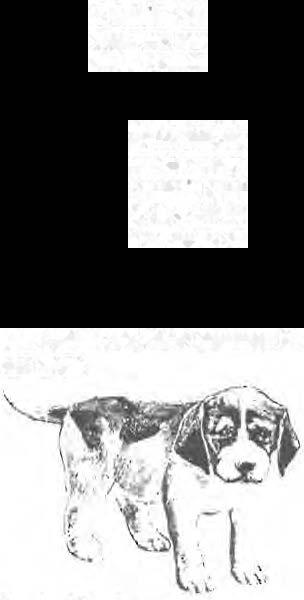
believed to have originated in the Basque country of Spain and France and migrated with shepherds to Australia and the United States, where it became a favorite of sheep and cattle ranchers.
His a highly intelligent and adaptable breed and has been used for tracking, narcotics detection, search and rescue and as hearing dogs. They are excellent companions and areeasily trained for obedience competition.
It has been said "There's nothing liJ...e an Aussie. Once you've shared your life with one of these dogs and let them into your heart, you'll neverown another breed."
Companion Dogs
It can be difficult to find a particular breed and the American Kennel Club has established a national Breeder Referral Program to help potential dog owners find breeders within their geographical area. By calling 1-900-407 PUPS (7877), you can obtain the name of a local breeder who can supply a list of sources.
It is advisable to do some research about a breed before you buy. The dear little puppy may be too much for the owner when it matures. Always investigate lhe amount of grooming required to keep a dog looking like those seen at shows and in television commercials.
Over-population is a serious problem and companion animals should be spayed or neutered. Responsible breeders plan their programs to eliminate genetic defects and produce animals which can be properly placed in good homes. Often you will have to wah for a puppy.
When a female ts spayed, two problems are avotded. There is far less possibility of development of breast
tumors and confinement during heat periods is no longer needed.
Bitches have their first season or ''heat" at about six months of age, although it may not occur until 18 month!> of age. Usually there are two seasons a year. There is no hard fast rule. The first stage (proestrus) when bleeding occurs lasts about nine days but may range from three to 17 days. Thesecond stage (estrus) is the time of receptivity to matmg and usually lasts about nine days but may range from three to 21 days. Confinement and careful watching may be necessary for short or long periods in unspayed bitches. Coping with this can be too much of a problem for many families. A neutered male ts generally a better house dog. He will not have as great a tendency to roam and, of course, cannot contribute to the overpopulation problem. Neutering may prevent development of prostate problems which are fairly common in older dogs.
Book Reviews
Dog Painting 1840-/940- A Social History ofthe Dog in Art by William Secord (Antique CoUectors Club, c/o William Secord Gallery, Inc., 52 E. 76th St., New York. NY 10021. $79.50).
This book belongs in the library of dog lovers. Superb reproductions include the lapdogs of Queen Victoria and many others - pampered pets and early sporting dogs. The text covers the
origins ofdog painting in Greek, Roman and European art. There is a chapter on dog painting in America. There are over 450 illustrations with 150infullcolor. A perfectholidaygift.
Peak Performance - Coaching the Canine Athlete by M. Christine Zink,
D.V.M., Ph.D. (Howell Book House, 866ThirdAve.,New York, NY 10022, $25.00)
Thisisa bookforthelayperson on sports medicine for the companion dog. Itcoversthespecialhealthneeds and conditioning required for rhe dog to meet its fullest potential.
Achapteronhowstructureaffects functioncovers physicaldifferencesin various breedsand simpledetailsofthe dog'sanatomy. Therearechapterson selection and routine management. There is a recommended format for a dog's recordbookwhichincludesexaminations for hereditary conditions, vaccinations, health checks, weight and medical history. A chapter on lamenessclassifies thecausesascongenital, degenerative, genetic, traumatic, infectious or unknown and discusses theseconditions. Nutritionaldisorders affectingbonesandjointsareobesity, theeffectsoffeedinganallmeatdiet, and oversupplementation in large and giant breeds of dogs. Suggested contents for a first aid kit are given.
Thereisadiscussionon performance-enhancing drugs (stimulants, depressants, anabolic steroids, drugs to modify heat cyclesand drugs tomodify appearance). Howstrictlyshould rules be enforced. It is suggested that perhaps it should be permissible and ethical to administer drugs that cure, control or comfort, but any drug givingan unfairadvantagein performance should not be permitted.
The finalchapterdealswithstress and how to reduce it. A stressed dog will become tired and not be able to concentrateon itsperformance,just as in humans. Abnormal behaviors thought to be a reflection of stress in dogs include self-mutilation, tail chasing, destruction of property and aggression.
The book has a "new" approach to canine problems and should be of interest to dog owners and trainers.
Merck Summer Research Fellowships
The Merck CompanyFoundation supported eight Merck Summer Research Fellowships at the School this year.Thegoalofthefellowshipsisto provide bona fide research experience to the students, as a potential career alternative.
AtPenntheprogram iscoordinated by Dr. Michael Atchison, assistant professorofbiochemistry. "We helda competition, students submitted brief research proposals and the committee selected the participants," he said.
• 'Allsummerlongthestudentsworked ontheirprojectsinthe laboratoriesof their sponsors. The group met once a week for informaJ presentations by faculty sponsors.
"At the end of the summer each studentgavea briefpresentationofthe projectandsubmittedapaperdescribing the research. These papers will be

subm1tted to the veterinary students' Phi Zeta Day research competition in the spring. Last year three of the winners at this event were former Merck Summer Research Fellows."
The faculty sponsors of the 1992 MerckSummer Research Fellowswere Drs. Mark Haskins, Paula Henthorn, Virginia Reef, Phillip Scott, Gail Smith, Dwight Stambolian, Robert Washabau, and John Wolfe.
On July 17, the students visited the Merck facilities in Rahwey, New Jersey. Here Merck veterinarians discussedtheircareerpathsanddescribed their current positions with the company. The Penn students also met the Merck Summer Research Fellows from Cornell University, Colorado State University and the University of Georgia.
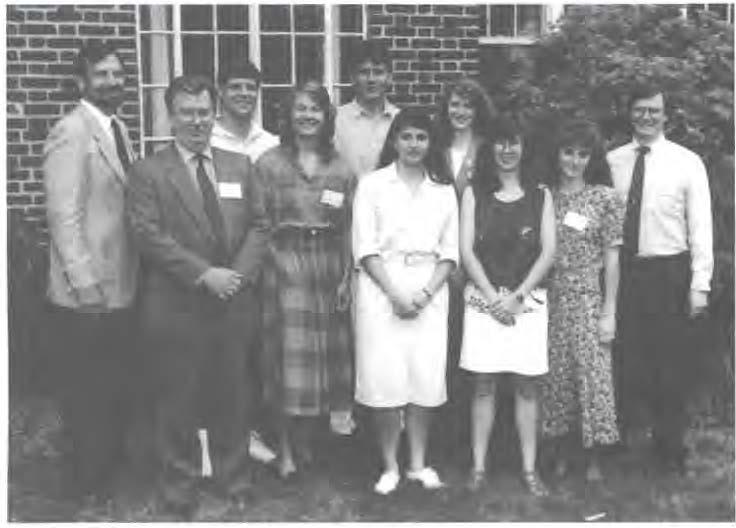 Silownhereore.fromlefttoright;Dr.JeffreyA.Wortman,assisla11fdeo11foracadmticaffairs;Dr. Ja11A Bergeron, Jo"66.ofMerck;ChrisHunsinger. V�;LeilaWor J/'94;SteveSute"' J/'95;LiJ·a Dipaolo. 1"'95;MaryCosrenoader,r'9_f_·CatherineMJJIIin, V'9J;Jl'untnel?uom-Monl i one. f/'95:Dr. .MidroelAtcltt:ron.AlysiaSinmd. f/'91. tireetiflttltpurliciponlin theprogram, is 1101J-lww.
Silownhereore.fromlefttoright;Dr.JeffreyA.Wortman,assisla11fdeo11foracadmticaffairs;Dr. Ja11A Bergeron, Jo"66.ofMerck;ChrisHunsinger. V�;LeilaWor J/'94;SteveSute"' J/'95;LiJ·a Dipaolo. 1"'95;MaryCosrenoader,r'9_f_·CatherineMJJIIin, V'9J;Jl'untnel?uom-Monl i one. f/'95:Dr. .MidroelAtcltt:ron.AlysiaSinmd. f/'91. tireetiflttltpurliciponlin theprogram, is 1101J-lww.
The 66 women and 32 men of the 107th class graduated on May 18, 1992. Roger Caras was the Commencement speaker and Dean Andrews, assisted by Assistant Dean Jeffrey A. Wortman, V'69, and Associate Dean Charles D. Newton and Dr. Alan M. Kellypresented the djplomasand perfonned the Hooding.
tf�.,. ·s J
Lillian Ruth Aronson •••
Stanley Richard Axelrod •
Jennifer Louise Baez
Julie Anne BebaJ...
Pamela Lynn Bendock •••
Bradford George Bentz
Helga Francisca Bleyaert
Tiffany Bogart
Brad William Bovee
Elizebeth Hall Bruce •
Eugenic Ann Bucher
Herbert Joseph Burns
Sarah Marie Bushmeyer ••
Linda Angel Casper **
Lisa Ann Cawley
Mary Lou Ciccone
Gia Anita Croce
Verena Maria de Cholnosky ...
Cynthia DiBuono ••
Tara Ann Duffy
Corinne Ann Dunagan
Uawn Ann Filos
Dinah Elaine Flack
Susan Taft Floyd
Rebecca Lynne Frankeny **
Douglas Peter Fraser
Judith Anne Gary
Jeffrey Hugh Giles
Mara Elzabeth Guth
Erin Elizabeth Hannabach ***
Kathryn Anne Hanson
Maureen Beradette Hargaden
Karen Bland Harvey
Kimberly Anne Henry
Stephanie Ann Herr
Patricia Marie Hogan
Sharon Sudlow Hubby •
Stephanie Marie lmperatore
Scott Douglass Johns
Michelle Denise Kaleta
Allison Grace Kraiser
Dara Lee Kraitchman ..
Howard Nelson Krum
Sharon Patricia Lachette
Kathy Wilf Liez
Stefanic Jennifer Spina Lin ***
Gerald Raymond Longworth, Jr.
Lori Lynn Ludwig •••
Darlene Anne Lundberg
Lisa Renee Lusk
Joanna Terese Manz
Frank Louis Marco
David WiUiam Matalon
John Joseph McCauley
Amy Elisabeth McDowell
Linda Mary McLaughlin
John Robert Melniczek
Caroline Louise Griffith Merchant
Catherine Elizabeth Micek
Lowell Tracy Midla
Mark Christopher Mills
John Scott Moore •
Diane Elizabeth Morris
Clifford Francis Mosson
Kelly Ann Mullen
Donald Leroy Neiffer
Meranie Ann Newman
Renee Denise Nodine •
Dororhy Mary Normile
Carolyn Ayers Paaby
Elizabeth Ann Paulosky
Scott Edward Perkins
Jeffrey R. Pope
Lorie Davida Portugal
Robin Pamela Pullen •
Laura Ann Reed
Manha Rachael Rodgers
Dina Anne Rovere
Helen Margaret Scott
Amy Ann Shrorr
Marko Robert Sima
Howard Jonathan Small
Christopher Patrck Smith
David Scott Spiegel
Robyn Adriane Schliep Steiner
Robert Patrick Stephens
Daniel John Suorsa
Sheppard Dutton Thorp
Karen Todd
Kenneth Edward Turner
Sandy Maria Vaghetto
Janice Weiher
Molly Jean Williams ••

Wade Allen Wisner
Stephanie Joan Woolwich-Holzman
Roy Patrick Embudo Yanong
Theodore Richard Zajac, III
Hector Jose Zayas
•• • Summa Cum Laude
• • Magna Cum Laude
• Cum Laude
Leonard Pearson Prize
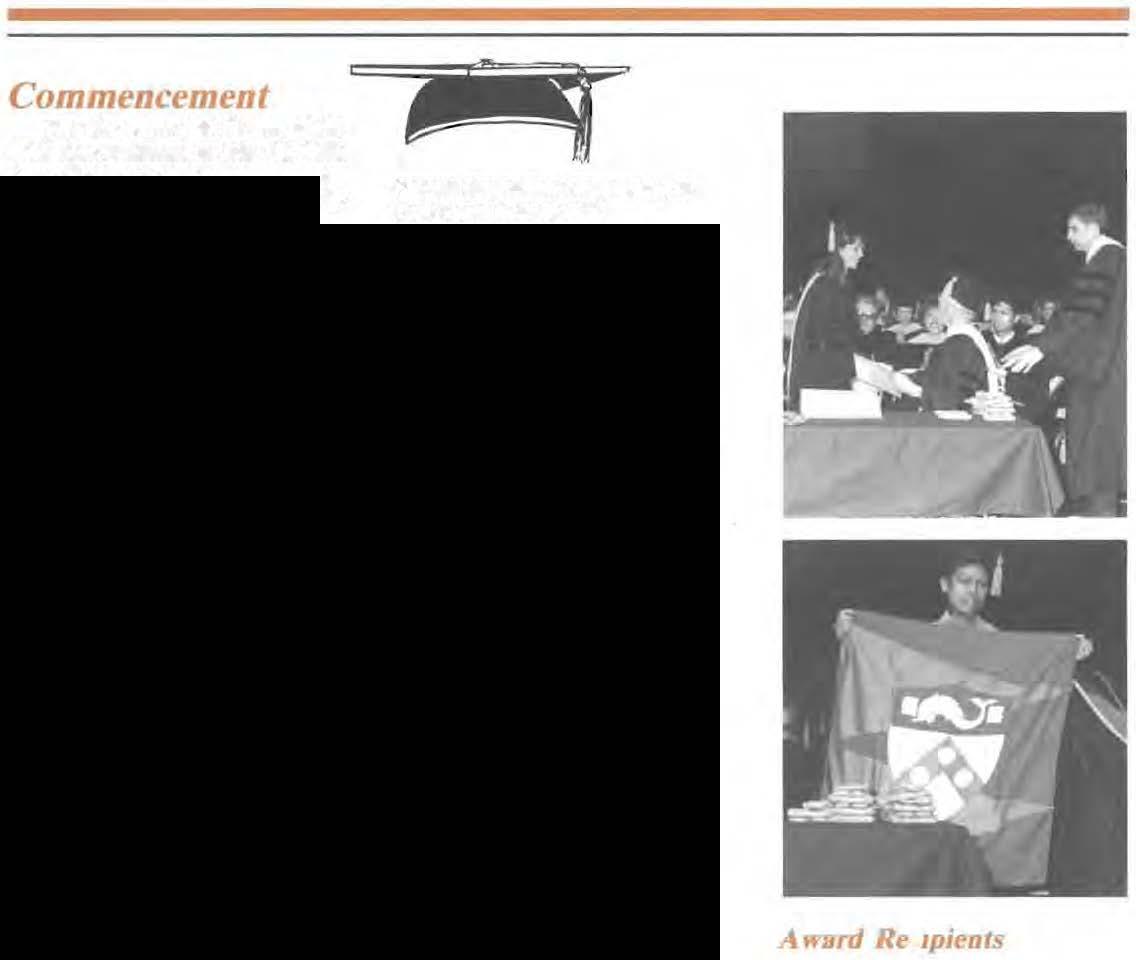
Pamela Lynn Bendock
J.B. Lippincott Prize
Erin Elizabeth Hannabach
/930 Class Prize in Surgery
Lori Lyon Ludwig
Auxiliary to the American Veterinary Mediral Association Prize
Lillian Ruth Aronson
Auxiliary to the Pennsylvama Veterinary Medical Association Prir.e
Erin Elizabeth Hannabach
/956 Class Medal for Achievement in Pathology
Lori Lynn Ludwig
James Hazlill Jones Prize in Biochemistry
Cynthia DiBuono

American Animal Hospital Association Award
Linda Angel Casper
Merck Awards
Small Animal Award
Sheppard Dutton Thorp
Large Animal Award
Renee Denise Nodine
George M. Palmer Prize
Wade Allen Wisner
Everingham Prizefor Cardiology
Robin Pamela Pullen
E.L. Stubbs A ward in Avian Medicine
Dinah Elaine Flack
Large Animal Surgery Prize
Rebecca Lynne Frankeny
Large Animal Medicine Prize
Elizabeth Hall Bruce
Morris L. Ziskind Prize in Swine Medicine
Lowell Tracey Midla
Morris L. Ziskind Prize in Public Health
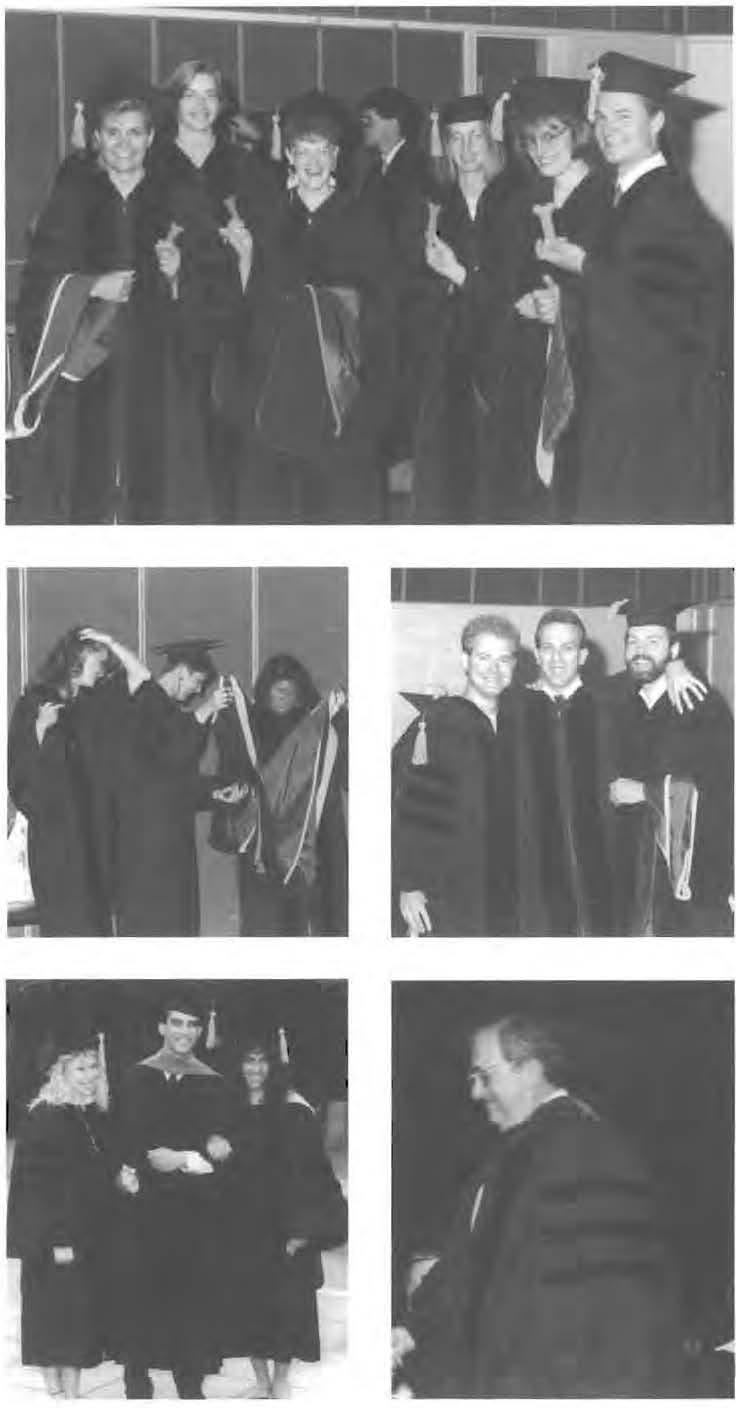
John Scott Moore
Hill's Awardfor Nutrition
John Robert Melniczek
Phi Zeta Award
Renee Denise Nodine
Purina Mills Award in Swine Medicine
John Joseph McCauley
Upjohn Awards
Small Animal A ward
Robin Pamela Pullen
Large Animal Award
Gerald Raymond Longworth, Jr.

Auxiliary to the Student Chapter of the American Veterinary Medical Association Prize
Sarah Marie Bushmeyer
Richard A. Ross Award in Field Service
Herbert Joseph Burns
American College of Veterinary Surgeons
Small Animal Surgery Prize
Stefanie Jennifer Spina Lin
Large Animal Surgery Prize
Martha Rachael Rodgers

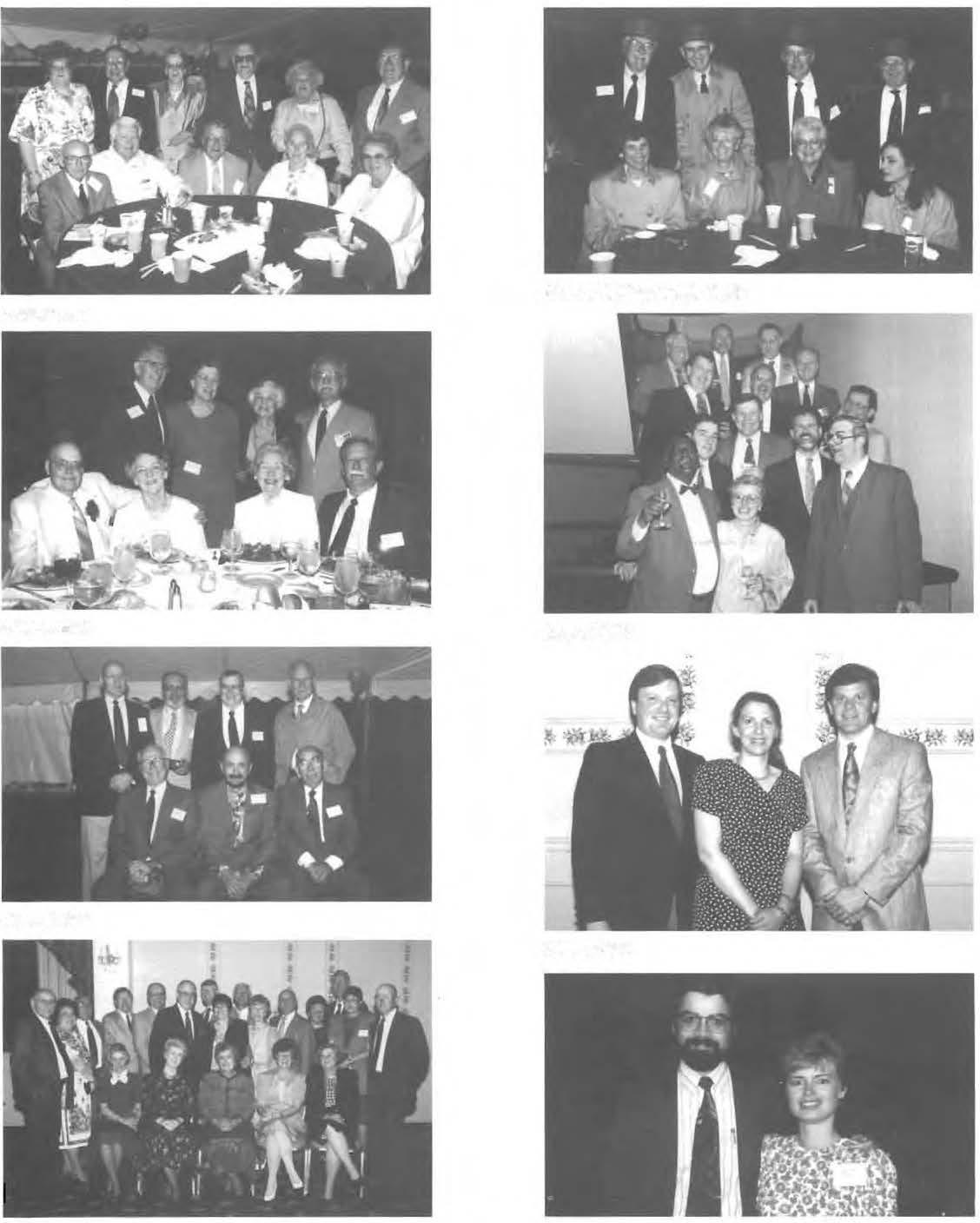 Class of 1937
Class o/ 1942
Class of 1947
Class of 1937
Class o/ 1942
Class of 1947
In Celebration of Reunion YeurGiving
Recently, a tradition of increased donations from alumni in honor of theirquinquennial reunions has begun. Although reunion year classes have alwaysmade an extra effort to increase theircontributions. this trend has been especially evident during the past five years.
Reunion gifts, unlike alumni annual giving contributions, are restrkted. They benefit a specific project or purchase acertain pieceofequipment. Alumni makereuniongiftsoutright, or through pledges, overa period ofa few years.
In 1987, for their 50th reunion, the Class of 1937 Jed by class agent HarryF.B. nartolett contributed money to renovate the "Class of 1937 Alumni Room" m VHUP. Through Harry's fundraising efforts, and the generosity of his classmates, by Alumni Day in May, 1987, they donated $23,350!
1he Alumni Room is a majorasset to the Hospital, providing sleeping accommodations for visiting lecturers and for faculty members who spend longhours at the Hospital and need a place to relit for a few hours. The Alumni Room also helps with the recruitment of new faculty members The 1937 graduates continue- 10 donate dollars for the maintenance of this room. Over the past five years, an additional $30,800 was placed in an endowment fund, the interest from which purchases necessary supplies for Lhe room.
for the1r 50th reunion, the Class of1939, led by Paul F. Landis. donated $17,970 to benefit the Connelly intensive Care Unit at New Bolton Center. Construction of this facility wasunderway and funding was needed to support various areas within the Unit. On yournext visit to NBC, look for the "Class of 1939 Examination Area" in the Connelly Intensive Care Unit.
In 1990. da.c;s agents Harold E. Schaden, V'40and Charles J. Driben. V'65 and their classes raised funds for
ajoint reunion gift. TheHospital was in need of a fully equipped computer facility. These classes generously agreed to help the Hospital with this project and donated $19,860.
ln celebration of their 50th reunion, classagent Robert J. Lerchand the Class of 1941 donated $5,100 in honor of their classmate, Edwin A. Churchill, for his outstandingwork in the field of equine medicine. Their contributions helped purchase an anesthesiaagent monitor for the Anesthesia Department at New Bolton Center.
In 1991, through the fine leadership ofWilliam D. Hardy. Jr. and the generosity ofhis classmates, the Class of 1966 established a new level of reunion giving. They raised a record $43,795 in pledges and payments, creating The Class of 1966 Lecture Fund. This lecturewill rotate between the Penn Annual Conference and the School's Laboratory ofMarineAnimal Health at Woods Hole, Massachusetts. The Class of 1966 set a precedent for succeeding 25th reunion classes.
This past May, 50 years after graduating, theClass of 1942and class agent David K. Detweiler, raised $8,400 in pledges and payments to support the Alumni Annual Givmg fund. An anonymous donor will match gifts up to a total of $10,000.
While maintaining their average Annual Giving total, class agent Charles W. Koenig, V'5? and his classmates contributed an additional $4,175 10 honor oftheir35th reunion. These extra dollars will be used to supplement student scholarshipaid. Theclass will continue to increase its giving efforts for the next two years.
This year, the Class of 1967 conv�ned tocelebrate its 25th reunion. In honor of their reunion, members of this class committed themselves to at least match the Class of 1966 record which was set a year earlier. Class Agent Larry Dieter and the reunion committee consisting of Edwin Andrews, JamesArtnstrong, Philip Cook, Robert Goldstein, Darrell Hoffman, Maurice Metcalfe, Jr., James Ramage, and Carolyn Reed helped raise an impressive$66,124 in pledges and payments to funda Dean'sScholar. Each c;cholarship, created by giftli of$50,000
or more, finances a portion of a student's education with the interest derived from the endowment. These gifts dramatically illustrate our alumni/ae's loyaltyto and appreciation for theSchool. Many alumni from recent reunion classes doubted whether such ambitious goals were realistic. They proved that generosity knows no bounds, that Penn graduates areleaders in giving back as well.
This past year, additional gifts rrom individuals were made in honor of their reunions Jules Silver, V'47 donated $25,000tocreatethe Lucy and Jules Silver AQUA VET® Research Fellowship. Alonzo Edmiston, Jr., V'67 made a gift of $40,000 to finish funding aDean'sScholarin his name. Dean Edwin J. Andrews, V'67 will contribute $25,000, which will equally benefit the Alumni Annual Giving Fund and the Class of 1967 Dean's Scholar.
We are grateful to all alumni for their contributions and continued support of the School.
To II P:enn It rn i
In September, we sene you invitations to alumni receptions at the PVMA Conference in Lancaster. PA on Saturday, October 24th and at the AAEP Conference in Orlando, FLon Monday, November 30th.
Due toa printingerror, past-President Jack Bregman, V'66 was incorrectly listed as the President ofthe Veterinary Medical Alumni Society. Please note that Daniel D. Bleicher. V'53 is the current President. Sorry for any confusion.
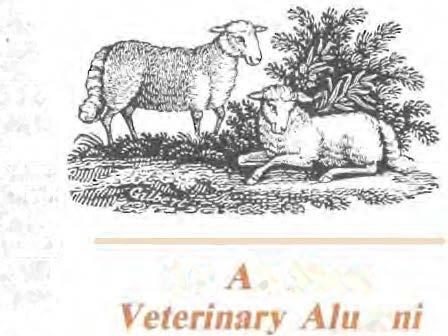
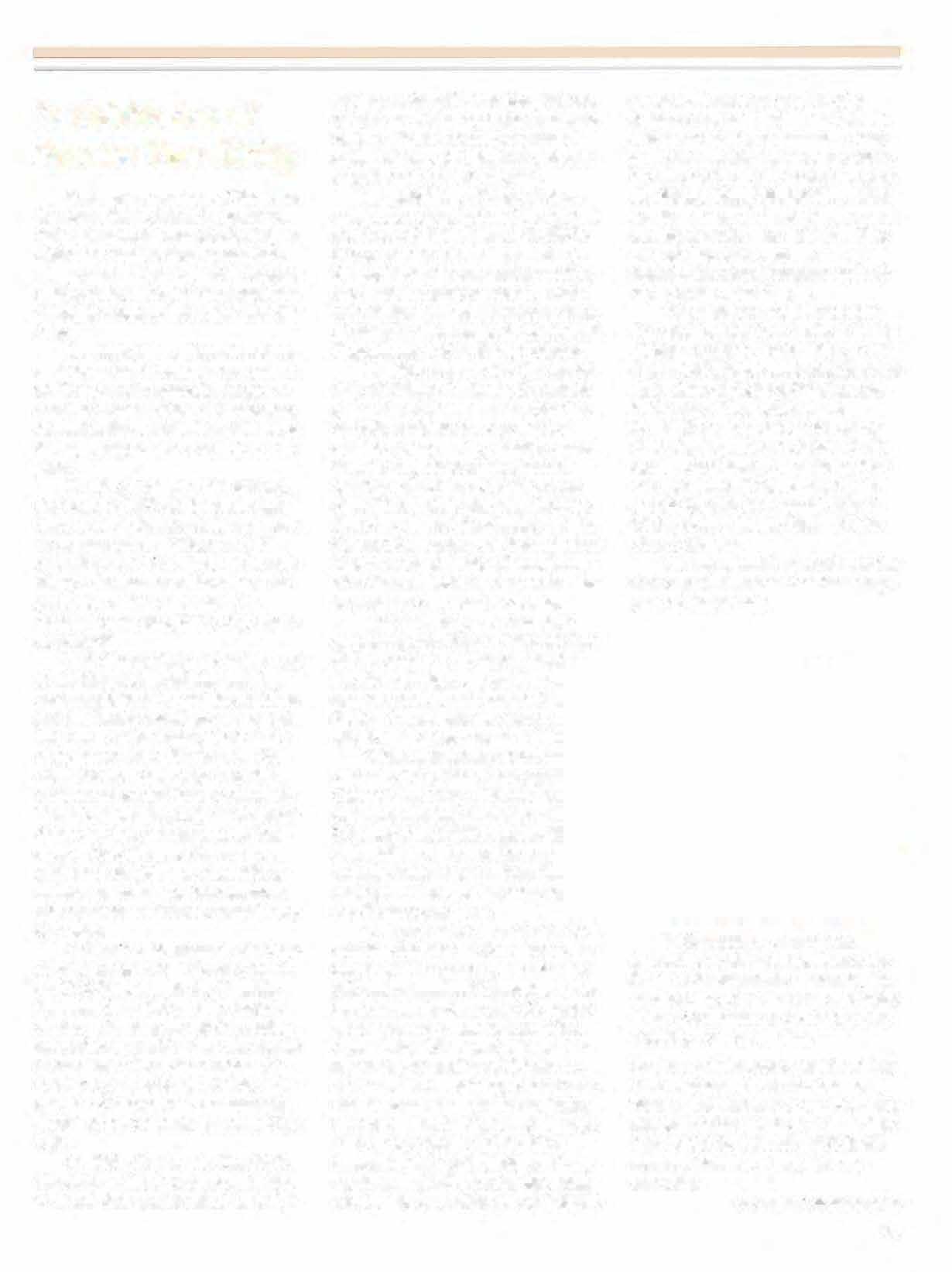
Au • nJ ay
Roughly 170 alumni attended Alumni Day in Philadelphia on May 16th. The schedule of events began with thetraditional VeterinaryMedical Alumni Society annual meeting, including the presentationoftheAlumni Awards of Merit. Dr. Jack Bregman, Y'66, passed thegavelfortheofficeof President toDr. DanielBleicher,V'S3, and introduced the 1992-1993 VMAS Executive Board (listed below). The meeting was followed by a luncheon and either a walking tour of Society Hill, atourtothe NJStateAquarium atCamden, oratourthrough VHUP. The day concluded with an alumni dinner/dance at the Philadelphia Hilton and Towers.
Alumni Awards of Merit
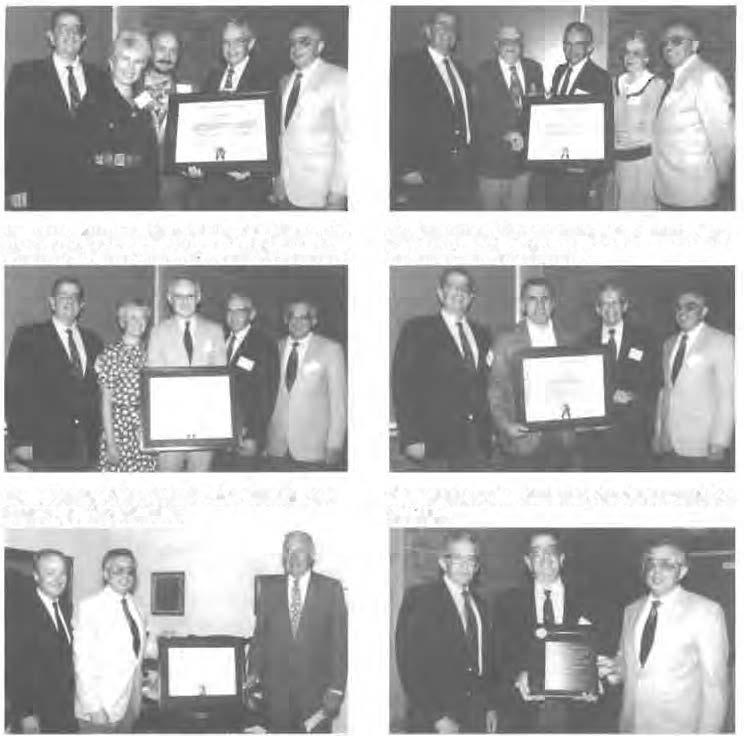
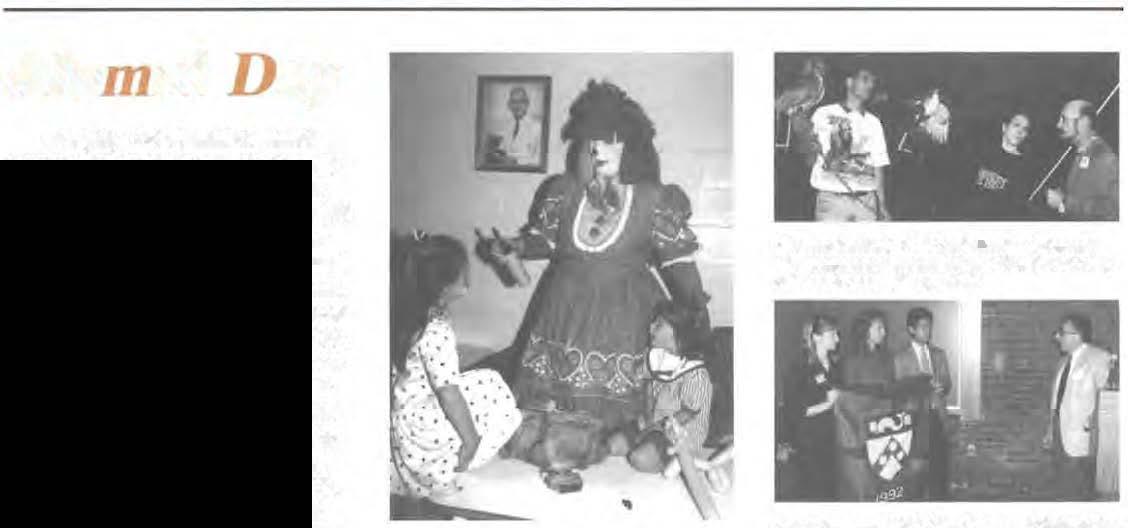

The Veterinary Medical Alumni Societyofthe UniversityofPennsylvania School of Veterinary Medicine presentedtheAJuroni AwardofMerit tosix distinguished alumnionAlumni Day on May 16 in Philadelphia. Honored were: Dr. Harry F.B. Bartolett, V'37, a retired veterinarian from Freehold, NJ; Or. AJoozo Edminstoo, V'67, asmall animal practitionerinLa Mesa, CA; Or. Charles W. Koenig, V'57, a small animal practitioner in Limerick, PA; Or. Melvin M. Rabstein, V'37, retiredandresidingin Long Boat Key, FL; Dr. Victor T. Rendano, V'72, associateprofessorat theNew YorkStateCollegeofVeterinary Medicine, Cornell University; and Dr. Jules Silver, V'47, ofNiantic, CT and Boca Raton, FL.
TheSocietyalsohonored Charles S. Wolf, chairman emeritus of the School's Board ofOverseers, andpresentedhimwith the HonoraryAlumni Award ofMerittobecomethesecond non-veterinarian honorary alumnus.
Veterinary Medical Alumni Society Board 1992-1993
Officers
Dr. Daniel D. Bleicher, V'53, President
Dr. George L. Hartenstein IV, V'68, President-Elect & Vice Chatr, Liruson Committee
Dr. Jack Bregman, V'66, Past-President; Chair, Awards & Nominating Committee
Members-at-Large
Dr. Charles N. Bell, V'70, Benjamin Franklin Society Chair & Phonathon Co-Chair
Dr. Pierre A. Conti, V'60, Class Agent Co-Chair
Dr. Richard D. Derstine, V'57
Dr. Diane R. Eigner, V'80, Benjamin Franklin Society Chair & Phonathon Co-Chair
Dr. John R.S. Fisher, V'61, Annual Giving Co-Chair & Phonathon Co-Chair
Dr. Bryan S. Johnson, V'63
Dr. Seth A. Koch, Class Agent Co-Chair
Dr. Edgar R. Marookian, V'54
Dr. Sidney L. Mellman, V'49
Dr. Pat A. Picone, V'78, Annual Giving Co-Chair & Phonathon Co-Chair
Dr. Joseph D. Slick, V'53, Chair, Pennsylvania Veterinary Medkal Historical Society
Dr. James V. Stewart, V'68
Dr. Stephen W. Syken, V'86
Dr. Ellsworth B Thorndike, Jr., V'64, Class Agent Co-Chair
Other Board Members
Dr. M. Josephine Deubler. V'38, Historian
Dr. Peter J. Felsburg, V'69. Faculty Representative, VHUP
Dr. Charles Benson, Faculty Representative, NBC
Dr. Kathy M. Mockler, V'90, Pacesetter Representative
Dr. Michael Moyer, V'90, Pacesetter Representative
Student Representatives
Meg Sleeper, V'93, Class President
Steven Cudia, V'94, Class President
Steve Suter, V'95, Class President
Patricia Khuly, V'95, Student Government President
Ex-Officio Members
Dr. Edwin J. Andrews, V'67, Dean
Nancy Martino, Director of Alumni Affairs
Dr. Jeffrey Ott, P.V.M.A. President
Dr. Martha O'Rourke, D.V.M., New Jersey VMA President
Dr. William Wade, D.V.M., Delaware VMA President
Continuing Education
Dec. t2 and Dec. 13
Intensive Hands-on Small Animal Dental Continuing Education Programs Canine Periodontics
Jan 20 and Jan. 21
1993 Penn Annual Conference, Adam's Mark Hotel
1992 Alumni Liaison Committee
Members of the 1992 Alumni Liaison Committee had a productive twoday visit to the School on March 17th and 18th meetingwithstudents, faculty representatives, and interns and residents on both campuses. The purpose of this annual meeting, which includes a different contingent of alumni each year, is toproducea balanced report to alumni, faculty, staff, and students concerning the School's strengths and weaknesses.
We wish to thank the following alumni whoserved on the 1992 Alumni Liaison Committee:
Daniel D. Bleicher, V'53, Chairman
Jack Bregman, V'66
Diane R. Eigner, V'80
Edgar M. Fox, V'SI
Midge Leitch, V'73
Edgar R. Marookian, V'54
Michael Moyer, V'90
Carol D Swandby, V84

Stephen W. Syken, V'86
D. Robert VaJlance, V'70
Albert L. Wagner, Jr., V'51
Apologies go to Drs. Syken, Vallance, and Wagner, whose names were inadvertently omitted from the list of committee members in the Liaison Committee report.
Jan. 27
Surgjal)Treatmentof F..ar Diseasein Dogs
Feb. 10
Reconstructive Stifle Surgery Laboratory
Feb. 24
Small Animal Medical Problems
Mar. 6, and Mar. II
Intensive Hands-on Small Animal Dental Continuing Education Programs.

Mar. 14
Critical Care
cl•olan hips
TheNewJerseyVeterinaryEducation Foundation awardedscholarships toJayJasan, V'93, andJune Hacker, V'95. Jay Jasan also received the Richard Dorr, Jr. Scholarship. The other recipient of this scholarship is Christopher Hill, V'93. The Clark Foundation awarded a scholarship to Joshua Hasbrouck Clay, V'95.
LanceBassage, V'93, istherecipient of the Westminster Kennel FoundationScholarship.ThreestudentsreceivedscholarshipsfromtheAmerican Kennel Club. They are: Christopher Hunsinger, V'94, Michele Trammell, V'93, and Gillian Rutb Gibson, V'94. Ms. Gibson alsoreceivedascholarship from the Union County Kennel Club.
Debra Buchanan, V'9S, receiveda scholarship from the Trushel Scholarship Trust. John Price, V'94, is the recipient of the first Clifford F. Wright, Jr. Scholarship. David M. Rutledge, V'93, is the recipient of the David I. and Victoria R. Greenberg Memorial Scholarship. Mark Hanlon, V'93, hasbeen awardedtheIsraeland Anna Live Scholarship. Jill L. Steu, V'94, received a scholarship from the GrandChapterofPennsylvaniaOrder of the Eastern Star. Maureen Firth, V'93, received a scholarship from the Maine Department of Agriculture, Food and Rural Resources.
The Burlington County Kennel Club awarded a scholarship to Deborah Mandell, V'93. The Lancaster Kennel Club, Inc. awarded three scholarships, the recipients are: Nancy J. Brady, V'95, Lisa A. Rutb, V'94, and Betsy C. Squires, V'93. Lauren P. Flato, V'93, istherecipient ofthe Amlan Foundation scholarship. Joseph Vito, V'93, has been awarded the New York Farmers Scholarship.
Megan Hilf, V'94, received a scholarship from the Cairn Terrier Club of America for her work on culturingcaninecartilagecellstoinvestigate the pathogenesis of inherited metabolic disease and approaches to testing in vitro therapy using gene transfer.
Dean's Scllolar s
Lara Chavin, V'95, has received the Henry S. McNeil, Jr. Dean's Scholarshjp. Threedean'sscholarships were established by the Estate of J. Maxwell Moran, Sr. The recipients of the J. Maxwell Moran, Sr. Dean's Scholarships are: Krista Price, V'95, Laureen Smith, V'93, and Deborah Mandell, V'93.
The recipients of the Charles S. and Phyllis F. Wolf Dean's Scholarships are: Joshua Clay, V'95 andJudith A. Surdam, V'94. Michele A. TrammeU, V'93, has received the Anne Linn White Dean'sScholarship.
Bryan Cherry, V'96, received the Hill's Pet Products Dean's Scholarship. TheJack Mara/Hill's Pet Products Dean's Scholarship was awarded to LisaJ. Saravis, V'94. Svea K. Wahlstrom, V'94, is therecipientof the Mrs. Jack L. Billhardt Dean's Scholarship. The Bruce J. Heim Dean's Scholarship was awarded to Amy L. Dowd, V'93.
Nen'ly Established JJ;oundation Supports t
1f :: t
Mr. and Mrs. John A. McCrane, clients of New Bolton Center and the Small Animal Hospital, established a private foundation earlier this yearto supportanimaJwelfare, thearts.family and children's services, and conservation.TheSchoolofVeterinaryMedicine is among the f!fst beneficiaries of the McCrane Foundation's largesse.
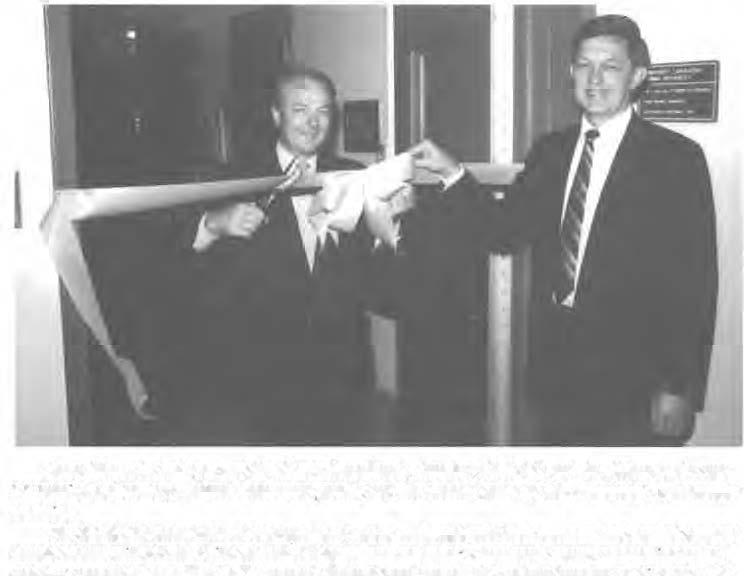
InOctobertheMcCraneFoundation madetwogiftstotheSchoolofVeterinary Medicine. One grant for $15,00) will purchase a cardiac output computer for the Intensive Care Unit at VHUP. Althoughthispieceofequipmentisroutinely used in human medicine to measure cardiovascularstatus,onlyoneotherveterinaryhospital uses a cardiac output computerforclinicalpatients,andonlyon occasion. VHUP's will be used routinely several times a week.

The second grant for $20,000 will purchasespecialized videoequipment for the high speed treadmill at New Bolton Center. 1£ will be used to standardize looking at ways both lame and sound horses travel while in motion and for a broad spectrum of other projects in Equine Sports Medicine.
Thefacilityincludesasterile two-operating-room suiteequipped with vacuum andcellfroloxygen; kennel rooms wult23ronswuh automaticfeedersand wat�trers, a treotmef/1 room, quaranlmespu<'e, and two roomsforcats. Thejacilit}lexceedsfederalrequirementsforanimalhousing antiL�p11rt ofthe University's program 10 upgrade all animal core and usejacilrties on campus.
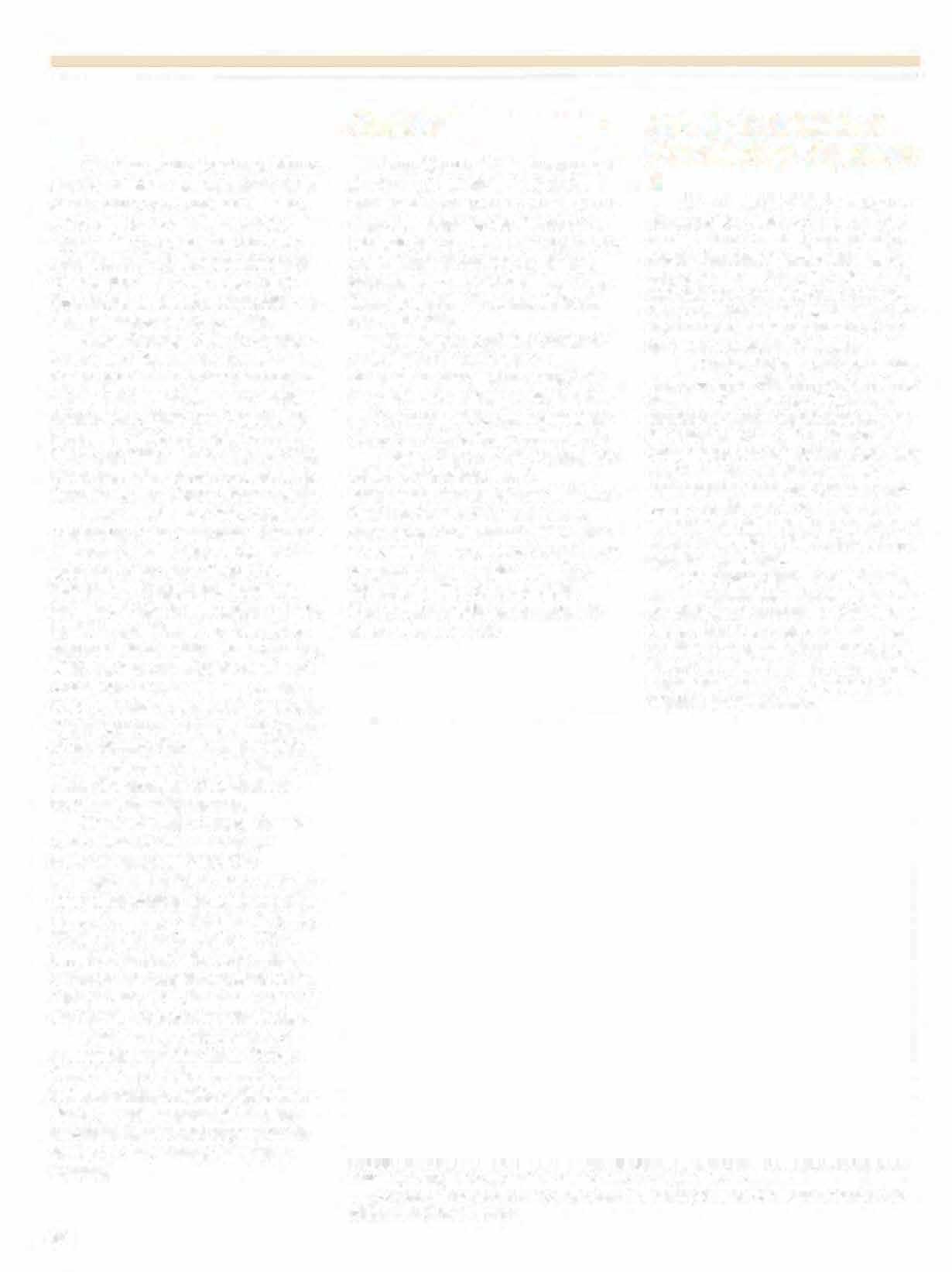
Therenovaliof/s wtrefundedhygrantsfi'Om the University Research De••elopmentFund andthe Notional Institutes ofHealtll.

Memorials
TheUniversityofPennsylvaniaSchool ofVeterinaryMedicine, theVeterinary Hospital and New Bolton Center gratefully acknowledge gifts in memory ofspecial friends. Recent memorials include:
In Memory of Mrs. Averell Penn
Smith Walker (Mrs. Joseph A.)
Dorothy S. Armstrong
Katherine D. Van Pelt Beaver
Mrs. N. H. Biddle
Mr. and Mrs. Harry P. Bingham, Jr.
The Frances and Townsend Burden Foundation
Alice S. Carter
Mr. and Mrs. W. Burling Cocks
Sallie Joy Cully
Mrs. E. Detchon, Jr.
Mrs. Morris H. Dixon
Malcolm J. Edgerton, Jr.
Mary Fisk
Mrs. Elizabeth H. Fleitas
Mrs. Hope Y. Hanes
Catherine Larmore
John B. Leake
Mr. and Mrs. Colin M. Lofting
FranJ... L. Mansell
Mrs. Stanley G. Mortimer
Mr. and Mrs. Hugh J. O'Donovan
Mary F.S. Remer
Republican Committeeof Chester County
Dr. Monica Reynolds
Donald J. Rosato, M.D.
Mr. and Mrs. Charles C. Rumsey
Mr. and Mrs. Edgar Scott
Edgar Scott, Jr.
Ralph G. Smith III
Bruner H. Strawbridge
Margaret Dorrance Strawbridge FoundationofPennsylvania ll, Inc.
Angela and Glen T. Urquhart
Charles B. VanPelt
Patsy Wilmording
Mr. and Mrs. George F. Wintersteen
lo Memory of Mrs. Catberioe ("C.C.") Crane Welling
Mrs. Welling had a love of, and interest in, all animals. She was particuJatly concerned with the rapid spreadofcancerinGolden Retrievers.
Gifts from the following donors, in addition to a bequest from Mrs. Welling, will purchase much needed computerequipmentfortheOncology Department in the SmaU Animal Hospital.
Garden State Golden RetrieverClub, Inc.
Mary Scott Kirkpatrick
Lenape Golden Retriever Club, lmc.
Mr. and Mrs William Martin, Jr.
Dr. David McAdoo·
Anne and Herman Plusch
Mr. and Mrs. Karl R. Schoettle, Jr.
Edgar Scott, Jr.
Joseph A. and Elizabeth A. Scott
Winifred G. Strickland
William M. and Flora L. Trego
March K. Walsh
Mrs. Proctor WetherilJ
W. Edward McGough Sc:bolarsbip Fund
In Bellwether32 we usted the contributors to the W. Edward McGough Scholarship Fund. Unfortunately, Dr. Guiseppe Bennelli (deceased) and Mr. Walter F. Goodman wereomitted from the list. Mr. Goodman's contribution was in memory of James E. Clark and Elsie (Mrs. Stewart)Simmons. Weapologize for the ommission.
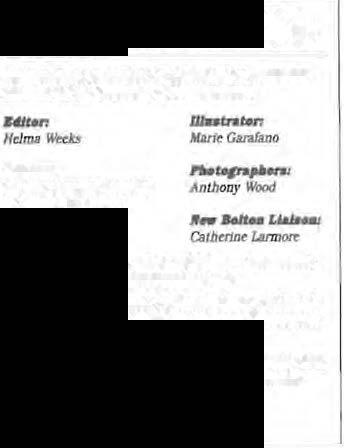
Since then furtherdonationsto the fund have been received from:
Miss Eugenia Bishop
K. CaJ'Ol Carlson
Friends of Donald J. Massaker
Tom Natalini
inmemoryofDonald1. Massaker
Frank T. Sabella
Bruce R. Schwartz
Mr. and Mrs. Harry J. Schwartz
The donations bring the fund more than three fifth toward the goaJ of$50,000.
Awardfor CreativityfromDr. Jani� L. Nichol. Field TechnicalServiC'es,MSDAgVet. Thegoalofthi' awardsprogram, establishedin 1991, is to motivaterisktakingintheimplementationof innovativeapproaC'hertoveterinarymedical education. Dr. Abtreceivedtheawardforhis leadershipin theAQUAVE�program.
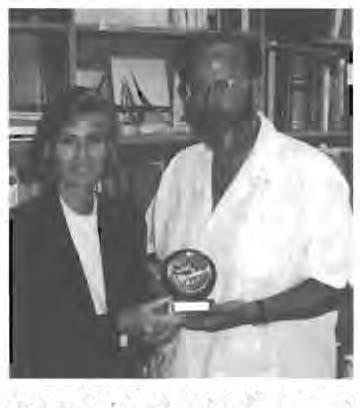
Bellwether 33
�upub1WicdbytheSchooloflttutn.&l}' McdlcmeotlbeUIJ/�tyofA:nnsyll!lllfa.
-.nt-1
Dr.M.JoS!tphlncDrubltr (An/malCmckers}
JoanC.pullJ Uellllll�
�1:11/Utoht2ryiJurp121M.criUc/�msorcomments. PI�addttMyourrorrespondenceto:
-.bu.........Unl.-.:nJJl)lofPennsyil-anlll.Schoolof �i"U:riMJYMedicine.3800Spruce��.Phlllldelphla, 1'1\191�/0(2151698·1415
NnntoflbtM811/cltt�.nif1�reprodueedInaoyfOITJl trllboullhtptrrnl!i/1/ottollhtediiMofBell'll\'lber. L.a�t.,U•�•ItM rJ�.,,..,lruU.
 Dr. DonaldA Abt,RobertR.Marshak Term ProfessorofAquaticAnimalMedicineand Pathology,acceptstheMSDAgVet
Dr. DonaldA Abt,RobertR.Marshak Term ProfessorofAquaticAnimalMedicineand Pathology,acceptstheMSDAgVet
University of Pennsylvania
School of Veterinary Medicine
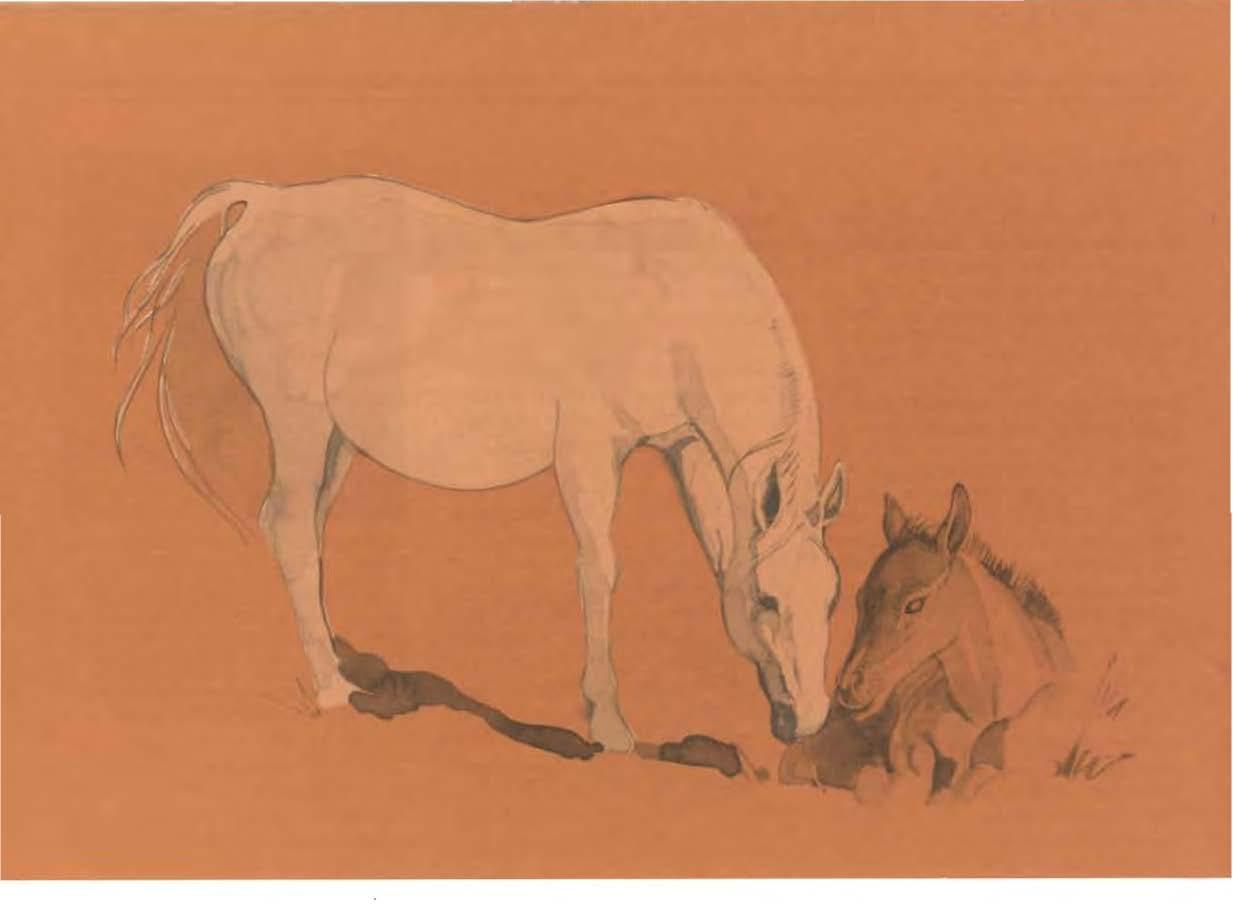
3800 Spruce Street
Philadelphia, PA 19104-6008
Address correction requested
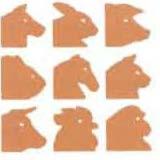
Nonprofit Organization US Postage PAID

Philadelphia, PA
Permit No. 2563
